 I really like the cutout-look images on the cover, with the hidden animals...Synopsis: We don't necessarily review a ton of realistic MG fiction here (not as much Wonderland in the real world, I suppose) but it doesn't mean we aren't reading or... Read the rest of this post
I really like the cutout-look images on the cover, with the hidden animals...Synopsis: We don't necessarily review a ton of realistic MG fiction here (not as much Wonderland in the real world, I suppose) but it doesn't mean we aren't reading or... Read the rest of this post
Viewing: Blog Posts Tagged with: Reviews, Most Recent at Top [Help]
Results 26 - 50 of 5,313
Blog: Finding Wonderland: The WritingYA Weblog (Login to Add to MyJacketFlap)
JacketFlap tags: Realistic Fiction, AF, Reviews, Historical Fiction, Middle Grade, Add a tag
Blog: A Fuse #8 Production (Login to Add to MyJacketFlap)
JacketFlap tags: The Little Prince, Willy Wonka and the Chocolate Factory, Gene Wilder, Reviews, Alice in Wonderland, Add a tag
Consider, if you will, the life of Gene Wilder. Since his death, many people have been doing precisely that. It makes me happy, but since I’ve harbored a not-so-secret crush on the man for decades (a quick search of this blog will back that up) I felt it necessary to point out that for all that he was a great actor, he was also, and often, key in bringing to life various famous children’s literary characters.
The most obvious of these was, of course, Willy Wonka. Without Wilder’s mad genius, the film Willy Wonka and the Chocolate Factory could never have been the wonder that it was. A brief hat tip to Gene there:
Mr. Wilder also portrayed The Fox in the live adaptation of The Little Prince. Though not as odd as Bob Fosse’s Snake, it’s still a mighty peculiar role.
Some would then forget but Mr. Wilder also portrayed the Mock Turtle in a made-for-TV adaptation of Alice’s Adventures in Wonderland.
In his honor, then, allow me to post all the funny links related to Mr. Wilder and his roles as I can come up with.
First up, long before wrote the picture book Let Me Finish, Minh Lê created this stellar little post about a reality show called The Sweet Life.
I loved it when he was portrayed as one of the many American actors in this faux montage Celebrating 50 Years of American Doctor Who.
Admit it. He would have been glorious.
Next up, one of my favorite How It Should Have Ended videos:
This other little gem came up not too long ago:
And in parting . . .
Blog: A Fuse #8 Production (Login to Add to MyJacketFlap)
JacketFlap tags: Canadian picture books, picture book readalouds, 2016 picture books, 2016 reviews, Reviews 2016, 2016 picture book readalouds, Reviews, picture books, Canadian children's books, Tundra Books, Bill Slavin, Add a tag
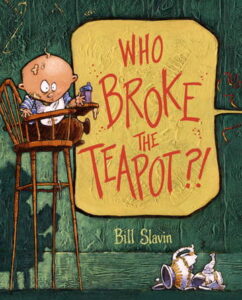 Who Broke the Teapot?!
Who Broke the Teapot?!
By Bill Slavin
Tundra Books
$16.99
ISBN: 978-1-77049-833-4
Ages 3-5
On shelves now
In the average life of a child, whodunits are the stuff of life itself. Who took the last cookie? Who used up all the milk and then didn’t put it on the shopping list? Who removed ALL the rolls of toilet paper that I SPECIFICALLY remember buying at the store on Sunday and now seem to have vanished into some toilet paper eating inter-dimension? The larger the family, the great the number of suspects. But picture books that could be called whodunits run a risk of actually going out and teaching something. A lesson about honesty or owning up to your own mistakes. Blech. I’ll have none of it. Hand me that copy of Bill Slavin’s Who Broke the Teapot?! instead, please. Instead of morals and sanctity I’ll take madcap romps, flashbacks, and the occasional livid cat. Loads of fun to read aloud, surprisingly beautiful to the eye, and with a twist that no one will see coming, Who Broke the Teapot?! has it all, baby. Intact teapot not included.
The scene of the crime: The kitchen. The family? Oblivious. As the mother enters the room it’s just your average morning. There’s a baby in a high chair, a brother attached to a ceiling fan by his suspenders, a dad still in his underwear reading the paper, a daughter eating pastries, a dog aiding her in this endeavor, and a cat so tangled up in wool that it’s a wonder you can still make out its paws. And yet in the doorway, far from the madding crowd, sits a lone, broken, teapot. Everyone proclaims innocence. Everyone seems trustworthy in that respect. Indeed, the only person to claim responsibility is the baby (to whom the mother tosses a dismissive, “I doubt it”). Now take a trip back in time just five minutes and all is revealed. The true culprit? You’ll have to read the book yourself. You final parting shot is the mother accepting a teapot stuck together with scotch tape and love from her affectionate offspring.
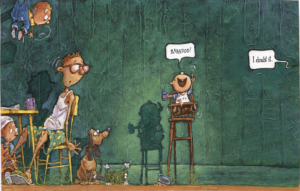 Generally when I write a picture book review I have a pretty standard format that I adhere to. I start with an opening paragraph (done), move on to a description of the plot in the next paragraph (so far, so good), and in the third paragraph I talk about some aspect of the writing. It could be the overall theme or the writing or the plotting. After that I talk about the art. This pattern is almost never mucked with . . . until today!! Because ladies and gents, you have just GOT to take a gander at what Mr. Slavin’s doing here with his acrylics. Glancing at the art isn’t going to do it. You have to pick this book up and really inspect the art. For the bulk of it the human characters are your usual cartoony folks. Very smooth paints. But even the most cursory glance at the backgrounds yields rewards. The walls are textured with thick, luscious paints adhering to different patterns. There’s even a touch of mixed media to the old affair, what with cat’s yarn being real thread and all (note too how Slavin seamlessly makes it look as if the yarn is wrapped around the legs of the high chair). Then the typography starts to get involved. The second time the mom says “Who broke the teapot?!” the words look like the disparate letters of a rushed ransom note. As emotions heat up (really just the emotions of the mom, to be honest) the thick paints crunch when she says “CRUNCHED”, acquire zigzags as her temper unfurls, and eventually belie the smoothness of the characters’ skin when the texture invades the inside of the two-page spread of the now screaming mother’s mouth.
Generally when I write a picture book review I have a pretty standard format that I adhere to. I start with an opening paragraph (done), move on to a description of the plot in the next paragraph (so far, so good), and in the third paragraph I talk about some aspect of the writing. It could be the overall theme or the writing or the plotting. After that I talk about the art. This pattern is almost never mucked with . . . until today!! Because ladies and gents, you have just GOT to take a gander at what Mr. Slavin’s doing here with his acrylics. Glancing at the art isn’t going to do it. You have to pick this book up and really inspect the art. For the bulk of it the human characters are your usual cartoony folks. Very smooth paints. But even the most cursory glance at the backgrounds yields rewards. The walls are textured with thick, luscious paints adhering to different patterns. There’s even a touch of mixed media to the old affair, what with cat’s yarn being real thread and all (note too how Slavin seamlessly makes it look as if the yarn is wrapped around the legs of the high chair). Then the typography starts to get involved. The second time the mom says “Who broke the teapot?!” the words look like the disparate letters of a rushed ransom note. As emotions heat up (really just the emotions of the mom, to be honest) the thick paints crunch when she says “CRUNCHED”, acquire zigzags as her temper unfurls, and eventually belie the smoothness of the characters’ skin when the texture invades the inside of the two-page spread of the now screaming mother’s mouth.
So, good textures. But let us not forget in all this just how important the colors of those thick paints are as well. Watching them shift from one mood to another is akin to standing beneath the Northern Lights. You could be forgiven for not noticing the first, second, third, or even fourth time you read the book. Yet these color changes are imperative to the storytelling. As emotions heat up or the action on the page ramps up, the cool blues and greens ignite into hot reds, yellows, and oranges. Taken as a whole the book is a rainbow of different backgrounds, until at long last everything subsides a little and becomes a chipper cool blue.
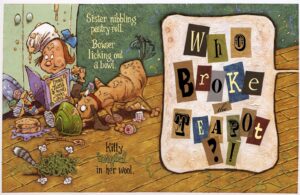 Now kids love a good mystery, and I’m not talking just the 9 and 10-year-olds. Virtually every single age of childhood has a weakness for books that set up mysterious circumstances and then reveal all with a flourish. Heck, why do you think babies like the game of peekaboo? Think of it as the ultimate example of mystery and payoff. Picture book mysteries are, however, far more difficult to write than, say, an episode of Nate the Great. You have to center the book squarely in the child’s universe, give them all the clues, and then make clear to the reader what actually happened. To do this you can show the perpetrator of the crime committing the foul deed at the start of the book or you can spot clues throughout the story pointing clearly to the miscreant. In the case of Who Broke the Teapot, Slavin teaches (in his own way) that old Sherlock Holmes phrase, “When you have eliminated the impossible, whatever remains, however improbable, must be the truth.”
Now kids love a good mystery, and I’m not talking just the 9 and 10-year-olds. Virtually every single age of childhood has a weakness for books that set up mysterious circumstances and then reveal all with a flourish. Heck, why do you think babies like the game of peekaboo? Think of it as the ultimate example of mystery and payoff. Picture book mysteries are, however, far more difficult to write than, say, an episode of Nate the Great. You have to center the book squarely in the child’s universe, give them all the clues, and then make clear to the reader what actually happened. To do this you can show the perpetrator of the crime committing the foul deed at the start of the book or you can spot clues throughout the story pointing clearly to the miscreant. In the case of Who Broke the Teapot, Slavin teaches (in his own way) that old Sherlock Holmes phrase, “When you have eliminated the impossible, whatever remains, however improbable, must be the truth.”
I love it when a book turns everything around at the end and asks the reader to think long and hard about what they’ve just seen. Remember the end of The Cat in the Hat when everything’s been cleaned up just in time and the mother comes in asking the kids what they got up to while she was gone? The book ends with a canny, “Well, what would YOU do if your mother asked YOU?” Who Broke the Teapot?! does something similar at its end as well. The facts have been laid before the readers. The baby has claimed responsibility and maybe he is to blame after all. But wasn’t the mother just as responsible? It would be very interesting indeed to poll a classroom of Kindergartners to see where they ascribe the bulk of the blame. It may even say something about a kid if they side with the baby more or the mommy more.
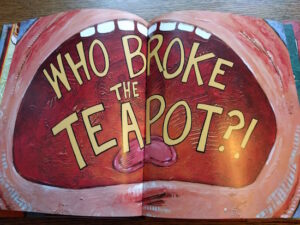 I also love that the flashback does far more than explain who broke the teapot. It explains why exactly most of the members of this family are dwelling in a kind of generally accepted chaotic stew. You take it for granted when you first start reading. A kid’s hanging from a ceiling fan? Sure. Yeah. That happens. But the explanation, when it comes, belies that initial response. The parents don’t question his position so you don’t question it. That is your first mistake. Never take your lead from parents. And speaking of the flashback, let’s just stand aside for a moment and remember just how sophisticated it is to portray this concept in a picture book at all. You’re asking a child audience to accept that there is a “before” to every book they read. Few titles go back in time to explain how we got to where we are now. Slavin’s does so easily, and it will be the rare reader that can’t follow him on this trip back into the past.
I also love that the flashback does far more than explain who broke the teapot. It explains why exactly most of the members of this family are dwelling in a kind of generally accepted chaotic stew. You take it for granted when you first start reading. A kid’s hanging from a ceiling fan? Sure. Yeah. That happens. But the explanation, when it comes, belies that initial response. The parents don’t question his position so you don’t question it. That is your first mistake. Never take your lead from parents. And speaking of the flashback, let’s just stand aside for a moment and remember just how sophisticated it is to portray this concept in a picture book at all. You’re asking a child audience to accept that there is a “before” to every book they read. Few titles go back in time to explain how we got to where we are now. Slavin’s does so easily, and it will be the rare reader that can’t follow him on this trip back into the past.
I think the only real mystery here is why this book isn’t better known. And its only crime is that it’s Canadian, and therefore can’t win any of the big American awards here in the States. It’s also too amusing for awards. Until we get ourselves an official humor award for children’s books, titles like Who Broke the Teapot?! are doomed to fly under the radar. That’s okay. This is going to be the kind of book that children remember for decades. They’re going to be the ones walking into their public libraries asking the children’s librarians on the desks to bring to them an obscure picture book from their youth. “There was a thing that was broken . . . like a china plate or something . . . and there was this cat tied up in string?” You have my sympathies, children’s librarians of the future. In the meantime, better enjoy the book now. Whether it’s read to a large group or one-on-one, this puppy packs a powerful punch.
On shelves now
Source: Publisher sent final copy for review.
Like This? Then Try:
- Mitzi Tulane, Preschool Detective in What’s That Smell? by Lauren McLaughlin, ill. Devvie Ridpath Ohi
- The Web Files by Margie Palatini
- I Want My Hat Back by Jon Klassen
Blog: A Fuse #8 Production (Login to Add to MyJacketFlap)
JacketFlap tags: Reviews, graphic novels, Andrews McMeel Publishing, middle grade graphic novels, Alexis Fajardo, 2016 reviews, Reviews 2016, 2016 graphic novels, 2016 middle grade graphic novels, Amp Comics, Add a tag
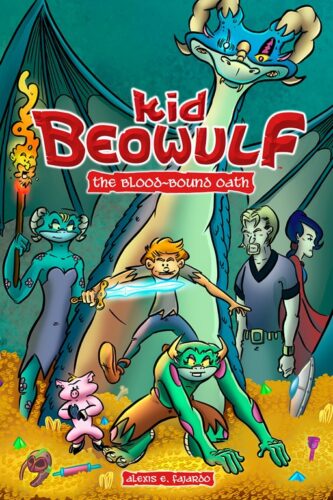 Kid Beowulf: The Blood-Bound Oath
Kid Beowulf: The Blood-Bound Oath
By Alexis E. Fajardo
Color by Jose Mari Flores
Prologue Color by Brian Kolm
Amp Comics for Kids (an imprint of Andrews McMeel Publishing)
$10.99
ISBN: 978-1-4494-7589-5
Ages 9-12
On shelves now.
This is a true story. I started college in 1996. Earlham College. Richmond, Indiana. Nice place. Little Quaker school (“Fight! Fight! Inner light! Kill, Quakers, Kill,” ← our sports chant). Little colleges have little cute traditions. Mine was keen on complicated pranks. One day I go down to the cafeteria for a bowl of Cheerios and lo and behold there, on the ceiling, is this epic mural of two cartoon characters touching fingers ala Michelangelo’s Adam and God in The Sistine Chapel. The characters in question were from a weekly comic in the school newspaper penned by one Alexis Fajardo. From that time onward I would Alexis Fajardo. And I followed his career. He kept up the comic strip (called “Plato’s Republic”) for a while and then started in on this Kid Beowulf graphic novel series. I didn’t get any chance to read them but they had a fun premise and the art really popped. Now, after all these many years, Amp Comics has picked up the series and given it a proper running start. In the grand tradition of Bone, Amulet, and countless other epic quest graphic novels, Fajardo gives us heroes to root for, villains to loathe, and complex characterizations around every turn. He’s come a long way from painting ceilings.
We start with the original epic poem of Beowulf. The original tale of man vs. monster is recounted but, the book assures us, “as men have told it – as I said, they twist the truth. Too blind to know the proper tale of a king’s run-rampant youth . . .” Now we are in the land of the Danes where a headstrong prince threatens a tenuous peace. Hrothgar cannot stand those Heathobards that he feels infringe on his homelands. When he encounters a dragon of great power he makes a deadly pact. Upon his return he begins a reign of destruction and ignorance, eventually fathering his own monstrous daughter. Named Gertrude, she is raised by the same dragon with whom Hrothgar made a pact. All this so that, in time, she will give birth to her own twins. One looks like her and is named Grendel. The other, a fully human boy, named Beowulf. And when they lose and find one another again, that’s when the story truly begins.
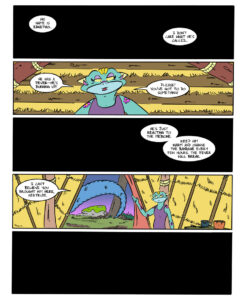 One thing I didn’t really expect when I picked the book up was to encounter Fajardo’s inclination to tell his tale in his own time. By all rights, all this book is really doing from the start is setting the stage for future tales to come. Yet though it’s named “Kid Beowulf”, the titular hero and his twin brother don’t even make an appearance until page 120, and even then they’re just babies. The reader’s patience is rewarded if that reader chooses to stick with the storyline, but it means that the best kids for this book won’t be the ones who like simplified narratives of action and adventure on every other panel. No, these books are going to be for those kids who like to sink deep into a world, dwell there for a time, scope out the situations, and understand the motivations. If you’ve a new graphic novel reader on your hands, I wouldn’t start them off with Kid Beowulf. This book is better suited for those kids out there with a little comic-reading experience under their belts.
One thing I didn’t really expect when I picked the book up was to encounter Fajardo’s inclination to tell his tale in his own time. By all rights, all this book is really doing from the start is setting the stage for future tales to come. Yet though it’s named “Kid Beowulf”, the titular hero and his twin brother don’t even make an appearance until page 120, and even then they’re just babies. The reader’s patience is rewarded if that reader chooses to stick with the storyline, but it means that the best kids for this book won’t be the ones who like simplified narratives of action and adventure on every other panel. No, these books are going to be for those kids who like to sink deep into a world, dwell there for a time, scope out the situations, and understand the motivations. If you’ve a new graphic novel reader on your hands, I wouldn’t start them off with Kid Beowulf. This book is better suited for those kids out there with a little comic-reading experience under their belts.
In a lot of ways, the book series reminds me of the old Asterix and Obelix comics. It’s not an entirely fair comparison since the tone of the two comics is completely different. Yet both spend an inordinate amount of time in an ancient world. Fajardo himself acknowledges this with the creation of two characters that intentionally have many of Asterix & Obelix’s personality quirks. Still and all, the book was far more complicated than I expected. Kids love that stuff, by the way. They love it when an author has the guts to tell a story without feeling obligated to explain everything constantly. And Fajardo doesn’t water down the complexity. You’re either on board with the storytelling from the start or you’re not. The politics of the region is what the plot hinges on continually, so you need to read this with an open mind towards the Geats, Danes, Heathobards, and others. People also come and go, betray one another, and reappear after years and years. To keep track of it all there is a Character Glossary but unfortunately it’s located in the back of the book where it might easily go missed for some time. If you’re handing this book to a kid, I recommend that you point that little element out to them first thing. They’ll thank you for it later.
After sitting down and thinking long and hard about it, I came to the shocking realization that Fajardo likes three-dimensional characters. That shouldn’t be all that shocking, actually. Lots of authors do. But consider the format here. We’re dealing with an epic quest graphic novel series. I mentioned Bone and Amulet earlier and if there’s one thing those stories have in common it’s bad guys that sulk about without so much as a sympathetic hair on their heads. Kid Beowulf is different. There are plenty of guys (and gals, sorta) working for their own selfish interests, but that also are capable of learning and growing. Hrothgar is probably the most flawed fella in the book, but even he does a slow 180-degree turnaround over the decades. And sympathetic characters like Gertrude also have their greedy moments for which they’ll have to pay the price later. It’s so interesting that you could even get this kind of shading in a book based, as it is, on a good vs. bad epic poem like Beowulf. That’s the irony at work.
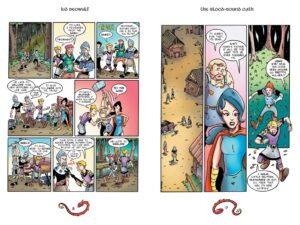 Considering the time period, the role of women in this book is worthy of examination. Fajardo has sort of a single style when it comes to human women (human girls don’t seem to exist) which is a heavy-lidded femme fatale look, regardless of their positions or names. The one exception to this rule is, of course, Gertrude, and in her monster form she gets to have all the freedom of any of the boys around her. She fights. She gets more than just a couple pages here and there. The book doesn’t even come close to passing the Bechdel Test, and Gertrude’s methods of finding a mate are disappointingly stereotypical, but for the most part she’s a strong female character worthy of examination. There is, however, room for improvement and I sincerely hope future installments will contain at least one other woman who does more than think only of the men in her life.
Considering the time period, the role of women in this book is worthy of examination. Fajardo has sort of a single style when it comes to human women (human girls don’t seem to exist) which is a heavy-lidded femme fatale look, regardless of their positions or names. The one exception to this rule is, of course, Gertrude, and in her monster form she gets to have all the freedom of any of the boys around her. She fights. She gets more than just a couple pages here and there. The book doesn’t even come close to passing the Bechdel Test, and Gertrude’s methods of finding a mate are disappointingly stereotypical, but for the most part she’s a strong female character worthy of examination. There is, however, room for improvement and I sincerely hope future installments will contain at least one other woman who does more than think only of the men in her life.
Sit down for five minutes in any public school in America today and don’t be surprised if you hear the words “Common Core State Standards” waft by at some point. These standards aren’t going anywhere anytime soon, and with their focus on nonfiction and folktales, it just makes good clean sense for any author of a fictional work to find some kind of curricular tie-in. Fajardo does just that. In fact, he goes a little bit crazy with it. I could understand the World Map at the start and the finish as well as in color in the backmatter. And the second map, the one of Daneland circa 450 A.D., that was a nice touch. But about the time I noticed the glossary of terms, character glossary, and family tree, to say nothing of the section about the original epic poem itself, Fun Fact section, and Bibliography of recommended sources (which, for the record, is a beautiful collection) I was floored. Add in a large section on how Fajardo draws his characters, inks and colors them, and more and . . . well, you’d be forgiven for feeling that this more akin to a full college course on Beowulf and graphic novels than a single collected comic.
 I haven’t mentioned the art itself, of course, which is poor form when reviewing a graphic novel. Fajardo employs two different styles in this book. The first part, during the retelling of the original Beowulf epic poem, is done in a more realistic, cinematic style. Even the colorist is different from the colorist in the rest of the book. Then the book becomes far cartoonier. Tiny too, considering how many panels Fajardo is able to pack into a single page. For some, the seriousness of the content (the fate of Yrs, for example) doesn’t match the style. For others, it will seem a natural complement. For my part I did find the cartoonishness a surprise, considering the actions of the characters, but as the story continued I got used to it. Kids, I suspect, will feel the same way.
I haven’t mentioned the art itself, of course, which is poor form when reviewing a graphic novel. Fajardo employs two different styles in this book. The first part, during the retelling of the original Beowulf epic poem, is done in a more realistic, cinematic style. Even the colorist is different from the colorist in the rest of the book. Then the book becomes far cartoonier. Tiny too, considering how many panels Fajardo is able to pack into a single page. For some, the seriousness of the content (the fate of Yrs, for example) doesn’t match the style. For others, it will seem a natural complement. For my part I did find the cartoonishness a surprise, considering the actions of the characters, but as the story continued I got used to it. Kids, I suspect, will feel the same way.
There is a school of thought that says that if you let a kid read whatever they want, they’ll work their way around to the classics in time. I read a ton of really truly terrible Harvey comics as a kid. Later I would delve into works like Les Miserables and Middlemarch for fun. Is there a connection? Nobody knows! A lot of parents fear that their kids will gorge themselves on comics, making them wholly and entirely unable to digest literature without pictures. To them, I hand Kid Beowulf. I truly do believe that a comic done correctly, done with panache and interest and a unique style of its own, will garner fans that will seek out other material on the same topic. Not every kid who reads Fajardo’s book is going to take a crack at a little Old English on their own. They may, however, dive into some of those books Mr. Fajardo so helpfully included in his Bibliography. Or they might learn a bit about the poem’s origins. Or they might want to make their own comics about ancient texts. Whatever the case, you can look at this book either as a springboard for bigger better things, or just a good rip-roaring tale that can stand on its own two feet. Whatever your justification, Fajardo has the goods. That painting he made on the ceiling years ago seemed impossible. This series? Attainable. Now go attain it.
On shelves now.
Source: Final copy sent from publisher for review.
Like This? Then Try:
- Boys of Blur by N.D. Wilson
- Beowulf by Garth Hinds
- Out of Boneville by Jeff Smith
Professional Reviews: A star from Kirkus
Blog: A Fuse #8 Production (Login to Add to MyJacketFlap)
JacketFlap tags: Reviews, middle grade fiction, Simon and Schuster, Atheneum, Best Books, middle grade realistic fiction, Jason Reynolds, Best Books of 2016, 2016 reviews, Reviews 2016, 2016 middle grade fiction, 2016 realistic fiction, diverse fiction, Add a tag
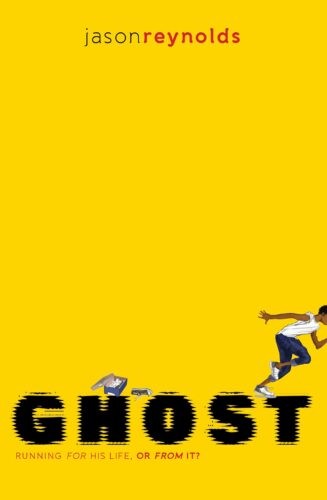 Ghost
Ghost
By Jason Reynolds
Atheneum (an imprint of Simon & Schuster)
$16.99
ISBN: 978-1-4814-5015-7
Ages 9-12
On shelves August 30th
This is a generalization, but in my experience librarians really enjoy reading within their comfort zones. They’ll travel outside of them from time to time but always they return to the books that they like the most. Children’s librarians are just the same. The fantasy readers stick to fantasy. The realism fans go with realism. Graphic novel readers with comics. When I served on a yearly committee of librarians in New York I’d notice that some books were difficult to get anyone to read. Horse books, for example, just sat on our shelves untouched. Nonfiction could take some prodding. And as for sports books . . . forget about it. Nobody ever got near them. Still, you can’t give up on them. Mike Lupica and Tim Green may rule the field but that doesn’t mean other people don’t make a lot out of athletics. If our Newbery winning The Crossover by Kwame Alexander taught us anything, it was that. Now Jason Reynolds, a young adult author until this year, has produced a middle grade novel centered on that must unlikely of sports: track. It skirts the clichés. It dodges the usual pitfalls. It makes you care about a kid who keeps messing up over and over and over again. It’ll make you like sports books, even if you can’t generally stand them. And now we’ve got to find a way to get a lot of it into the hands of kids. Stat.
Call him Ghost. You can call him Castle Crenshaw if you want to (that’s technically his name) but he’s been calling himself Ghost ever since the night his dad got drunk and threatened Castle and his mom with a gun. Ghost learned to run that night and you might say he’s been running ever since. He’s got a load of anger inside that he doesn’t know how to deal with so he tends to take it out on others at school. Then one day he spots a track warm-up and takes an instant dislike to the albino kid in the expensive tracksuit. Without thinking about it twice Ghost beats the guy on the track, running on the outside, which gets the attention of the coach. Coach begs Ghost to join and Ghost reluctantly agrees but it isn’t what he expected. The other kids there all have their own lives, few of them easy. The running is much harder than anything Ghost has ever experienced before. And then there’s the fact that no matter how fast he is, Ghost can’t run away from trouble. It follows him and if he’s not careful it’s going to follow him right onto the track.
Baseball. Basketball. Even football. These are the sports of fiction. I doubt anyone has ever run any statistics on it, but if you were to gather together all the children’s sports books and group them by type, the baseball books would undoubtedly outweigh all the others 2:1. That’s because baseball is a game with a natural rise and fall to its action. Basketball has speed and football has brute force, all good things when writing a story. Track? In track you run and then you stop. At least that’s how I always looked at it. For Jason Reynolds, though, it’s different. He didn’t write this book with track as a single focus. He looks at what the sport boils down to. Basically, this is a book about running. Running from mistakes (forgive the cliché), from very real threats, for your life, and for your team. Why you run and where you run and how you run. And if that’s where you’re coming from, then track is a very good choice of a sport indeed.
On paper, this book looks like it’s the sort of story that’s all been done before. That’s where Reynolds’ writing comes in to play. First off, it’s worth noticing that Mr. Reynolds is blessed with a keen sense of humor. This comes to play not just in the text but also in little in-jokes here and there. Like the fact that one of the runners (that, I should mention, gets cut later in the book because his grades are slipping) is named Chris Myers. Christopher Myers is the son of Walter Dean Myers, and a friend to Jason Reynolds. I love Jason’s descriptions too. Mr. Charles at the corner store, “looks just like James Brown if James Brown were white. . .” Or Ghost saying later, “… for something to make you feel tough, you gotta be a little bit scared of it at first.” There are some pretty fantastic callbacks hidden in the story as well. Right at the start, almost like it’s some kind of superhero origin story, we hear how Ghost heard the gun go off that night he ran away from his home with his mom and “I felt like the loud shot made my legs move even faster.” That ties in beautifully with the starter pistol that goes off at the very very end of the book.
But maybe what I like the most about Jason Reynolds’ books is that he applies this keen sense of the complexity to his characters. I don’t think the man could write a straight one-dimensional villain to save his soul. Even his worst characters have these brief moments of humanity to them. In this case, Ghost’s dad is the worst character. You don’t get much worse than shooting at your wife and kid after all. Yet for all that, Ghost still can’t help but love the guy and eats sunflower seeds in his memory. Each character in the book has layers that you can peel away as the story progresses. Even Ghost, ESPECIALLY Ghost, who makes you want to yell and him and cheer for him, sometimes at the same time.
There’s been a monumental push for increased diversity in children’s literature in the last few years. Diversity can mean any number of things and it often focuses on race. In a weird way, increasing the number of racially diverse books on a given publisher’s release calendar isn’t hard if the publisher is dedicated to the notion. Far more difficult is figuring out how you increase the economic diversity. Middle grade characters are almost always middle class. If they’re working class then they tend to be historical. Contemporary lower income kids in realistic novels are almost unheard of. For example, how many books for children have you ever read with kids living in shelters? I’ve read just one, and I’m a children’s librarian. So I watched what Reynolds did here with great interest. Ghost isn’t destitute or anything but his single mom makes ends meet by working long hours at a hospital. Middle class kids are remarkably good at ignoring their own privilege while kids like Ghost become almost invisible. In the book, Ghost’s decision to initially race Lu isn’t solely based on how Lu struts around the track, thinking he’s the bee’s knees. It’s also on his clothes. “…Lu, was decked out in the flyest gear. Fresh Nike running shoes, and a full-body skintight suit . . . He wore a headband and a gold chain around his neck, and a diamond glinted in each ear.” Later Ghost makes a decision regarding a particularly fancy pair of running shoes. That’s an economic decision as well. Those are the most obvious examples, but the book is full of little mentions, peppered throughout, of where Ghost’s class comes in to things. It’s nice to see an author who gets that. We are often affected by forces outside our control, forces we don’t even necessarily notice, particularly when we’re children. If young readers see it, they’ll be reading between the lines, just like Reynolds wants them to.
Right at the beginning of the book, when Coach is trying to convince Ghost’s mom that he should be running, Ghost realizes that he’s in a situation that’s played out in loads of sports films. He thinks, “If this went like the movies, I was either going to score the game-winning touchdown (which is impossible in track) or . . . die.” Sometimes you can gauge how good a book is by how self-aware its characters are. But sometimes you just read a book, put it down, and think, “Man. That was good. That was really good.” This is a book that actually made me tear up, and there aren’t a lot of middle grade books that do that. I was rooting for Ghost hard, right until the end. I was caring about a sport that I’d never otherwise think about in a million years. And I was admiring it from start to finish for all that it accomplishes in its scant 180 pages. This is the book you hand to the kids who want something real and good and honest. There are a lot of Ghosts out there in the world. Hopefully some of them will discover themselves here. Run, don’t walk, to pick this book up.
On shelves August 30th.
Source: Galley sent from publisher for review.
Like This? Then Try:
- Ghetto Cowboy by G. Neri
- The Crossover by Kwame Alexander
- Racing the Past by Sis Deans
Blog: A Fuse #8 Production (Login to Add to MyJacketFlap)
JacketFlap tags: Best Books of 2016, 2016 picture books, 2016 reviews, Reviews 2016, 2016 funny books, 2016 funny picture books, Reviews, picture books, knitting, funny books, Roaring Brook, Best Books, macmillan, funny picture books, Vera Brosgol, Add a tag
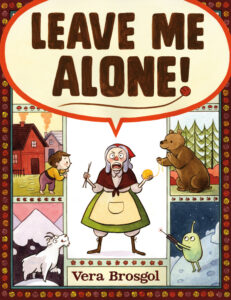 Leave Me Alone!
Leave Me Alone!
By Vera Brosgol
Roaring Brook Press (an imprint of Macmillan)
$17.99
ISBN: 9781626724419
Ages 4-7
On shelves September 13th
Knitting. It shouldn’t be so hard. I say this as the grown daughter of a chronic knitterer (not a word). I grew up neck deep in roving. I know the difference between a gossip wheel and a walking wheel (these are different spinning wheels). I know that if you want a permanent non-toxic dye for wool you use Kool-aid, that wool straight from the sheep is incredibly oily, and that out there are people who have turned the fur of their dogs and cats into sweaters. Yet the simplest act of knitting is lost on a good 50% of the children’s book illustrators out there that year after year can’t even be bothered to figure out which way the knitting needles are supposed to go. Down, people. The ends go down. In 2016 alone we’ve seen books like Maggie McGillicuddy’s Eye for Trouble get it wrong. Fortunately 2016 has also seen correctly positioned needles in Cat Knit, Ned the Knitting Pirate, and the greatest knitting related picture book I’ve seen to date Leave Me Alone! A superb readaloud of unparalleled visual humor, this is a knitting picture book par excellence and a pretty darn good original folktale too, come to think of it. Allowing for the occasional alien, of course.
“Once there was an old woman. She lived in a small village in a small house . . . with a very big family.” And by big family we mean big extended family. One gets the feeling that all her grown kids just sort of dump their own children on her, because there are thirty small grandchildren running amok in her home. Winter is coming soon and the old woman is keen on getting some knitting done for her extended brood. Trouble is, knitting and small children do NOT mix. So she picks up her stuff and goes into the deep, dark forest. That’s where the bear family finds her. So she goes to the mountains. Where the goats find her. Next it’s the moon. Where curious aliens find her. That leaves a wormhole where the void turns out to be her saving. Only problem is, it’s lonely in the void. Once her work is done, she heads back and when she sees her grandkids again, she doesn’t have to say a single word.
Here is the crazy thing about this book: It’s Vera Brosgol’s first picture book. I say that this is crazy because this does not read like a debut. This reads like Brosgol has been churning out picture books for decades, honing her skill, until finally at long last she’s produced a true diamond. But no. Some people get all the talent apparently. This is not, I should not, Ms. Brosgol’s first book in general. Her graphic novel Anya’s Ghost got a fair amount of attention a couple of years ago, and it was good. But nothing about that title prepared me for Leave Me Alone! Here we have a pitch perfect combination of text and image. If you were to read this book to someone without mentioning the creator, I don’t think there’s a soul alive who wouldn’t assume that the author and illustrator are one and the same. This is due largely to the timing. Just open the book to the first page. Examine the old woman on that page. Turn the page. Now look how that same woman has been transposed to a new setting and her expression has changed accordingly. Basically this sold the book to me right from the start.
 Funny picture books. For an author, creating a picture book that is funny means doing two things at once. You must appeal to both children and parents with your humor at the same time. Do you know how hard that is? Making something that a five-year-old thinks is funny that is also humorous to their parental unit is such a crazy balancing act that most picture book creators just fall on one side of the equation or the other. Make it funny only to adults and then you may as well just forget about the kids altogether (see: A Child’s First Book of Trump). Opt instead to only make it funny to kids and you doom the grown-ups to reading something they’d rather eat hot nails than read again (see: Walter the Farting Dog). But I honestly believe Brosgol has found the golden mean. Both adults and kids will find moments like the older sister stuffing a yarn ball in her brother’s mouth or the presence of the samovar (even in a wormhole) or the bear tentatively touching its nose after the old woman’s vigorous poke very funny indeed.
Funny picture books. For an author, creating a picture book that is funny means doing two things at once. You must appeal to both children and parents with your humor at the same time. Do you know how hard that is? Making something that a five-year-old thinks is funny that is also humorous to their parental unit is such a crazy balancing act that most picture book creators just fall on one side of the equation or the other. Make it funny only to adults and then you may as well just forget about the kids altogether (see: A Child’s First Book of Trump). Opt instead to only make it funny to kids and you doom the grown-ups to reading something they’d rather eat hot nails than read again (see: Walter the Farting Dog). But I honestly believe Brosgol has found the golden mean. Both adults and kids will find moments like the older sister stuffing a yarn ball in her brother’s mouth or the presence of the samovar (even in a wormhole) or the bear tentatively touching its nose after the old woman’s vigorous poke very funny indeed.
And let’s not downplay the writing here. There is serious readaloud potential with this book. I’ll level with you. In a given year you’ll see hundreds and hundreds of picture books published. Of these, a handful make for ideal readalouds. I’m not talking about books a parent can read to a child. I’m talking about books you can read to large groups, whether you’re a teacher, a librarian, or some poor parental schmuck who got roped into reading aloud to a group of fidgeting small fry. Few books are so good that anyone and everyone can enrapture an audience with them when read out loud. But Leave Me Alone! may be one of those rare few. Those beautiful butterflies. Those little jewels. The language mimics that of classic folktales, bandying about phrases like, “deep, dark forest”. And there are so many interactive possibilities. You could teach the kids how to yell out the phrase “Leave me alone!” all together at the same time, for example.
 As for the art, it’s perfect. There’s a kind of Kate Beaton feel to it (particularly when babies or goats have full balls of yarn stuffed into their mouths). As I mentioned before, Brosgol knows which way knitting needles are supposed to lie, and better still she knows how to illustrate thirty different, and very realistically rendered sweaters, at the story’s end. There are also some clever moments that you’ll notice on a third or fourth read. For example, the very first time the woman yells, “Leave me alone!” she’s exiting the gates to her home and her children’s homes. The only people who hear her are her grown children, which means we don’t have to worry about small ears hearing such a caustic phrase from their grandma. Smart. And did you see that the twins get identical sweaters at the end of the book? Finally, there are the visual gags. The goats that surreptitiously followed the old woman to the moon, nibbling on a moon man’s scanner, for example.
As for the art, it’s perfect. There’s a kind of Kate Beaton feel to it (particularly when babies or goats have full balls of yarn stuffed into their mouths). As I mentioned before, Brosgol knows which way knitting needles are supposed to lie, and better still she knows how to illustrate thirty different, and very realistically rendered sweaters, at the story’s end. There are also some clever moments that you’ll notice on a third or fourth read. For example, the very first time the woman yells, “Leave me alone!” she’s exiting the gates to her home and her children’s homes. The only people who hear her are her grown children, which means we don’t have to worry about small ears hearing such a caustic phrase from their grandma. Smart. And did you see that the twins get identical sweaters at the end of the book? Finally, there are the visual gags. The goats that surreptitiously followed the old woman to the moon, nibbling on a moon man’s scanner, for example.
I’ve seen a fair amount of hand wringing over the years over whether or not a children’s book can contain a protagonist that is not, in fact, a child, an animal, or an inanimate object rendered animate. Which is to say, are children capable of identifying with adults? More precisely, an adult who just wants to be alone for two seconds? The answer is swift and sure. Certainly they can. Particularly if the kid reading this book is an older sibling. The concept of being alone, of craving some time for one’s own self, is both familiar and foreign to a lot of kids. I’m reminded of the Frog & Toad story “Alone” from Days With Frog and Toad where Toad has a dark morning of the soul when he learns that Frog would like to have some alone time. Because of all of this, we see a lot of picture books where a character wants to be alone, has difficulty getting that “me time”, and eventually decides that companionship is the way to go (Octopus Alone, A Visitor for Bear, etc.). A few celebrate the idea (All Alone] by Kevin Henkes) but generally speaking parents use these books to convince their perhaps less than socially adept children that there are benefits to the concept of friendship. And there is a place in the world for such books. Fortunately there is also a place in the world for this book.
Folks sometimes talk to me about current trends in picture books. Sometimes they’re trying to figure out what the “next big thing” might be. But of course, the best picture books are the ones that at their core don’t really resemble anything but themselves. Leave Me Alone! isn’t typical. It reads aloud to big crowds of kids with great ease, lends itself to wonderful expressions, pops off the page, and will make anyone of any age laugh at some point. It’s a great book, and if I have to write another 500 words to convince you of it, I can do so. But why delay you from seeing it any longer? Go. Seek. Find. Read. Savor.
On shelves September 13th.
Like This? Then Try:
- Poinsettia and Her Family by Felicia Bond
- Let Me Finish by Minh Lê
- Lester’s Dreadful Sweaters by K.G. Campbell
Source: Galley sent by publisher for review.
Misc: Cute promotion or THE CUTEST PROMOTION? As you can see from this Bustle interview, Ms. Brosgol knit twenty-five teeny tiny sweaters to promote this book. I steal the image for my own nefarious purposes and show it to you here:
Blog: Finding Wonderland: The WritingYA Weblog (Login to Add to MyJacketFlap)
JacketFlap tags: Reviews, Diversity, Fantasy/Sci-Fi, Realistic Fiction, Multicultural Fiction, AF, Mothers & Daughters, Add a tag
 Synopsis: This surprisingly literary speculative fiction / friendship / family story is another welcome addition to the growing shelf of books about A) people of color, B) South Asians, and C) teens of mixed heritage. Tara Krishnan, the narrator, is... Read the rest of this post
Synopsis: This surprisingly literary speculative fiction / friendship / family story is another welcome addition to the growing shelf of books about A) people of color, B) South Asians, and C) teens of mixed heritage. Tara Krishnan, the narrator, is... Read the rest of this post
Blog: A Fuse #8 Production (Login to Add to MyJacketFlap)
JacketFlap tags: Reviews, nonfiction picture books, Best Books, picture book biographies, Little Brown and Company, African-American history, Javaka Steptoe, African-American biographies, African-American picture book biographies, African-American authors and illustrators, 2016 Caldecott contenders, Best Books of 2016, Reviews 2016, 2016 nonfiction picture books, 2016 picture book biographies, Add a tag
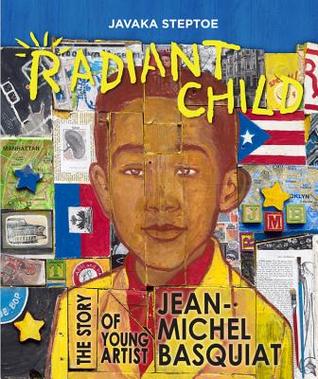 Radiant Child: The Story of Young Artist Jean-Michel Basquiat
Radiant Child: The Story of Young Artist Jean-Michel Basquiat
By Javaka Steptoe
Little, Brown & Co.
$17.99
ISBN: 978-0-316-21388-2
Ages 5 and up
On shelves October 25th
True Story: I’m working the children’s reference desk of the Children’s Room at 42nd Street of New York Public Library a couple years ago and a family walks in. They go off to read some books and eventually the younger son, I’d say around four years of age, approaches my desk. He walks right up to me, looks me dead in the eye, and says, “I want all your Javaka Steptoe books.” Essentially this child was a living embodiment of my greatest dream for mankind. I wish every single kid in America followed that little boy’s lead. Walk up to your nearest children’s librarian and insist on a full fledged heaping helping of Javaka. Why? Well aside from the fact that he’s essentially children’s book royalty (his father was the groundbreaking African-American picture book author/illustrator John Steptoe) he’s one of the most impressive / too-little-known artists working today. But that little boy knew him and if his latest picture book biography “Radiant Child: The Story of Young Artist Jean-Michel Basquiat” is even half as good as I think it is, a whole host of children will follow suit. But don’t take my word for it. Take that four-year-old boy’s. That kid knew something good when he saw it.
“Somewhere in Brooklyn, a little boy dreams of being a famous artist, not knowing that one day he will make himself a KING.” That boy is an artist already, though not famous yet. In his house he colors on anything and everything within reach. And the art he makes isn’t pretty. It’s, “sloppy, ugly, and sometimes weird, but somehow still BEAUTIFUL.” His mother encourages him, teaches him, and gives him an appreciation for all the art in the world. When he’s in a car accident, she’s the one who hands him Gray’s Anatomy to help him cope with what he doesn’t understand. Still, nothing can help him readily understand his own mother’s mental illness, particularly when she’s taken away to live where she can get help. All the same, that boy, Jean-Michel Basquiat, shows her his art, and with determination he grows up, moves to Manhattan, and starts his meteoric rise in the art scene. All this so that when, at long last, he’s at the top of his game, it’s his mother who sits on the throne at his art shows. Additional information about Basquiat appears at the back of the book alongside a key to the motifs in his work, an additional note from Steptoe himself on what Basquiat’s life and work can mean to young readers, and a Bibliography.
 Javaka Steptoe apparently doesn’t like to make things easy for himself. If he wanted to, he could illustrate all the usual African-American subjects we see in books every year. Your Martin Luther Kings and Rosa Parks and George Washington Carvers. So what projects does he choose instead? Complicated heroes who led complicated lives. Artists. Jimi Hendrix and guys like that. Because for all that kids should, no, MUST know who Basquiat was, he was an adult with problems. When Steptoe illustrated Gary Golio’s bio of Hendrix (Jimi: Sounds Like a Rainbow) critics were universal in their praise. And like that book, Steptoe ends his story at the height of Basquiat’s fame. I’ve seen some folks comment that the ending here is “abrupt” and that’s not wrong. But it’s also a natural high, and a real time in the man’s life when he was really and truly happy. When presenting a subject like Basquiat to a young audience you zero in on the good, acknowledge the bad in some way (even if it’s afterwards in an Author’s Note), and do what you can to establish precisely why this person should be mentioned alongside those Martin Luther Kings, Rosa Parks, and George Washington Carvers.
Javaka Steptoe apparently doesn’t like to make things easy for himself. If he wanted to, he could illustrate all the usual African-American subjects we see in books every year. Your Martin Luther Kings and Rosa Parks and George Washington Carvers. So what projects does he choose instead? Complicated heroes who led complicated lives. Artists. Jimi Hendrix and guys like that. Because for all that kids should, no, MUST know who Basquiat was, he was an adult with problems. When Steptoe illustrated Gary Golio’s bio of Hendrix (Jimi: Sounds Like a Rainbow) critics were universal in their praise. And like that book, Steptoe ends his story at the height of Basquiat’s fame. I’ve seen some folks comment that the ending here is “abrupt” and that’s not wrong. But it’s also a natural high, and a real time in the man’s life when he was really and truly happy. When presenting a subject like Basquiat to a young audience you zero in on the good, acknowledge the bad in some way (even if it’s afterwards in an Author’s Note), and do what you can to establish precisely why this person should be mentioned alongside those Martin Luther Kings, Rosa Parks, and George Washington Carvers.
There’s this moment in the film Basquiat when David Bowie (playing Andy Warhol) looks at some of his own art and says off-handedly, “I just don’t know what’s good anymore.” I have days, looking at the art of picture books when I feel the same way. Happily, there wasn’t a minute, not a second, when I felt that way about Radiant Child. Now I’m going to let you in on a little secret: Do you know what one of the most difficult occupations to illustrate a picture book biography about is? Artist. Because right from the start the illustrator of the book is in a pickle. Are you going to try to replicate the art of this long dead artist? Are you going to grossly insert it into your own images, even if the book isn’t mixed media to begin with? Are you going to try to illustrate the story in that artist’s style alone, relegating images of their actual art to the backmatter? Steptoe addresses all this in his Note at the back of the book. As he says, “Instead of reproducing or including copies of real Basquiat paintings in this book, I chose to create my own interpretations of certain pieces and motifs.” To do this he raided Basquiat’s old haunts around NYC for discarded pieces of wood to paint on. The last time I saw this degree of attention paid to painting on wood in a children’s book was Paul O. Zelinsky’s work on Swamp Angel. In Steptoe’s case, his illustration choice works shockingly well. Look how he manages to give the reader a sense of perspective when he presents Picasso’s “Guernica” at an angle, rather than straight on. Look how the different pieces of wood, brought together, fit, sometimes including characters on the same piece to show their closeness, and sometimes painting them on separate pieces as a family is broken apart. And the remarkable thing is that for all that it’s technically “mixed-media”, after the initial jolt of the art found on the title page (a full wordless image of Basquiat as an adult surrounded by some of his own imagery) you’re all in. You might not even notice that even the borders surrounding these pictures are found wood as well.
 The precise age when a child starts to feel that their art is “not good” anymore because it doesn’t look realistic or professional enough is relative. Generally it happens around nine or ten. A book like Radiant Child, however, is aimed at younger kids in the 6-9 year old range. This is good news. For one thing, looking at young Basquiat vs. older Basquiat, it’s possible to see how his art is both childlike and sophisticated all at once. A kid could look at what he’s doing in this book and think, “I could do that!” And in his text, Steptoe drills into the reader the fact that even a kid can be a serious artist. As he says, “In his house you can tell a serious ARTIST dwells.” No bones about it.
The precise age when a child starts to feel that their art is “not good” anymore because it doesn’t look realistic or professional enough is relative. Generally it happens around nine or ten. A book like Radiant Child, however, is aimed at younger kids in the 6-9 year old range. This is good news. For one thing, looking at young Basquiat vs. older Basquiat, it’s possible to see how his art is both childlike and sophisticated all at once. A kid could look at what he’s doing in this book and think, “I could do that!” And in his text, Steptoe drills into the reader the fact that even a kid can be a serious artist. As he says, “In his house you can tell a serious ARTIST dwells.” No bones about it.
How much can a single picture book bio do? Pick a good one apart and you’ll see all the different levels at work. Steptoe isn’t just interested in celebrating Basquiat the artist or encouraging kids to keep working on their art. He also notes at the back of the book that the story of Basquiat’s relationship with his mother, who suffered from mental illness, was very personal to him. And so, Basquiat’s mother remains an influence and an important part of his life throughout the text. You might worry, and with good reason, that the topic of mental illness is too large for a biography about someone else, particularly when that problem is not the focus of the book. How do you properly address such an adult problem (one that kids everywhere have to deal with all the time) while taking care to not draw too much attention away from the book’s real subject? Can that even be done? Sacrifices, one way or another, have to be made. In Radiant Child Steptoe’s solution is to show Jean-Michel within the lens of his art’s relationship to his mother. She talks to him about art, takes him to museums, and encourages him to keep creating. When he sees “Guernica”, it’s while he’s holding her hand. And because Steptoe has taken care to link art + mom, her absence is keenly felt when she’s gone. The book’s borders go a dull brown. Just that single line “His mother’s mind is not well” says it succinctly. Jean-Michel is confused. The kids reading the book might be confused. But the feeling of having a parent you are close to leave you . . . we can all relate to that, regardless of the reason. It’s just going to have a little more poignancy for those kids that have a familiarity with family members that suffer mental illnesses. Says Steptoe, maybe with this book those kids can, “use Basquiat’s story as a catalyst for conversation and healing.”
That’s a lot for a single picture book biography to take on. Yet I truly believe that Radiant Child is up to the task. It’s telling that in the years since I became a children’s librarian I’ve seen a number of Andy Warhol biographies and picture books for kids but the closest thing I ever saw to a Basquiat bio for children was Life Doesn’t Frighten Me as penned by Maya Angelou, illustrated by Jean-Michel. And that wasn’t even really a biography! For a household name, that’s a pretty shabby showing. But maybe it makes sense that only Steptoe could have brought him to proper life and to the attention of a young readership. In such a case as this, it takes an artist to display another artist. Had Basquiat chosen to create his own picture book autobiography, I don’t think he could have done a better job that what Radiant Child has accomplished here. Timely. Telling. Overdue.
On shelves October 25th.
Source: F&G sent from publisher for review.
- Like This? Then Try:
- A Splash of Red by Jen Bryant
- Jake Makes a World by Sharifa Rhodes-Pitts
- It Jes’ Happened: When Bill Traylor Started to Draw by Don Tate
Professional Reviews: A star from Kirkus
Blog: A Fuse #8 Production (Login to Add to MyJacketFlap)
JacketFlap tags: Reviews, middle grade fantasy, funny books, Best Books, abrams, Amulet Books, Amy Ignatow, middle school novels, middle school fantasy, funny fantasy, Best Books of 2016, Reviews 2016, 2016 middle grade fantasy, 2016 middle grade fiction, 2016 funny books, 2016 middle school fiction, Add a tag
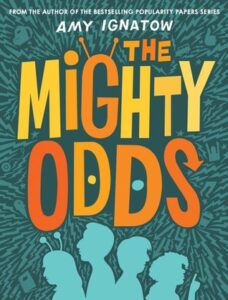 The Mighty Odds
The Mighty Odds
By Amy Ignatow
Amulet Books (an imprint of Abrams)
$15.95
ISBN: 978-1-4197-1271-5
Ages 10 and up
On shelves September 13th
If you could have one weird superpower, what would it be? Not a normal one, mind you. We’re not doing a flight vs. invisibility discussion here. The power would have to be extraordinary and odd. If it’s completely useless, all the better. Me? I think I’d like my voice to be same as the voice you hear in your head when you’re reading something. You know that voice? That would be my superpower. A good author can crank this concept up to eleven if they want to. Enter, Amy Ignatow. She is one of the rare authors capable of making me laugh out loud at the back covers of her books. For years she’s penned The Popularity Papers to great success and acclaim. Now that very realistic school focus is getting a bit of a sci-fi/fantasy kick in the pants. In The Mighty Odds, Ignatow takes the old misfits-join-together-to-save-the-world concept and throws in a lot of complex discussions of race, middle school politics, bullying, and good old-fashioned invisible men. The end result is a 21st century superhero story for kids that’s keeps you guessing every step of the way.
A school bus crashes in a field. No! Don’t worry! No one is killed (that we can tell). And the bus was just full of a bunch of disparate kids without any particular connection to one another. There was the substitute teacher and the bus driver (who has disappeared). And there was mean girl Cookie (the only black girl in school and one of the most popular), Farshad (nicknamed “Terror Boy” long ago by Cookie), Nick (nerdy and sweet), and Martina (the girl no one notices, though she’s always drawing in her sketchbook). After the accident everything should have just gotten back to normal. Trouble is, it didn’t. Each person who was on or near the bus when the accident occurred is a little bit different. It might be a small thing, like the fact that Martina’s eyes keep changing color. It might be a weird thing, like how Cookie can read people’s minds when they’re thinking of directions. It might be a powerful thing, like Farad’s super strength in his thumbs. Or it might be a potentially powerful, currently weird thing like Nick’s sudden ability to teleport four inches to his left. And that’s before they discover that someone is after them. Someone who means them harm.
Superhero misfits are necessarily new. Remember Mystery Men? This book reminded me a lot of that old comic book series / feature film. In both cases superpowers are less a metaphor and more a vehicle for hilarity. I read a lot of books for kids but only once in a while do I find one enjoyable enough to sneak additional reads of on the sly. This book hooked me fairly early on, and I credit its sense of humor for that. Here’s a good example of it. Early in the book Cookie and a friend are caught leaving the field trip for their own little side adventure. The kids in their class speculate what they got up to and one says that clearly they got drunk. Farshad’s dry wit then says, “… because two twelve-year-olds finding a bar in Philadelphia that would serve them at eleven A.M. was completely plausible.” Add in the fact that they go to “Deborah Read Middle School” (you’ll have to look it up) and I’m good to go.
Like I’ve said, the book could have just been another fun, bloodless superhero misfit storyline. But Ignatow likes challenges. When she wrote the Popularity Papers books she gave one of her two heroines two dads and then filled the pages with cursive handwriting. Here, her heroes are a variety of different races and backgrounds, but this isn’t a Benetton ad. People don’t get along. Cookie’s the only black kid in her school and she’s been very careful to cement herself as popular from the start. When her mom moved them to Muellersville, Cookie had to be careful to find a way to become “the most popular and powerful person in school.” Martina suggests at one point that she likes being angry, and indeed when the world starts to go crazy on her the thing that grounds her, if only for a moment, is anger. And why shouldn’t she be angry? Her mom moved her away from her extended family to a town where she knew no one, and then her mother married a guy with two kids fairly fast. Cookie herself speculates about the fact that she probably has more in common with Farshad than she’d admit. “He was the Arab Kid, just like Cookie was the Black Girl and Harshita Singh was the Indian Girl and Danny Valdez was the Hispanic Guy and Emma Lee was the Asian Chick. They should have all formed a posse long ago and walked around Muellersville together, just to freak people out.” Cookie realizes that she and Farshad need to have one another’s backs. “It was one thing to be a brown person in Muellersville and another to be a brown person in Muellersville with superpowers.” At this point in time Ignatow doesn’t dig any deeper into this, but Cookie’s history, intentions, and growth give her a depth you won’t find in the usual popular girl narrative.
For the record, I have a real appreciation for contemporary books that feature characters that get almost zero representation in books. For example, one of the many things I love about Tom Angleberger’s The Qwikpick Papers series is that one of the three heroes is Jehovah’s Witness. In this book, one of the kids that comes to join our heroes is Amish. Amish kids are out there. They exist. And they almost never EVER get heroic roles in stories about a group of friends. And Abe doesn’t have a large role in this book, it’s true, but it’s coming.
Having just one African-American in the school means that you’re going to have ignorant other characters. Cookie has done a good job at getting the popular kids in line, but that doesn’t mean that everyone is suddenly enlightened. Anyone can be tone deaf. Even one of our heroes, which in this case means Nick’s best friend, the somewhat ADD, always chipper Jay. Now I’ve an odd bit of affection for Jay, and not just because in his endless optimism he honestly thinks he’ll get permission to show his class Evil Dead Two on the field trip bus (this may also mark the first time an Evil Dead film has been name dropped in a middle grade novel, by the way). The trouble comes when he talks about Cookie. He has a tendency to not just be tone deaf but veering into really racially questionable territory when he praises her. Imagine a somewhat racist Pepe Le Pew. That’s Jay. He’s a small town kid who’s only known a single solitary black person his entire life and he’s enamored with her. Still, that’s no excuse for calling her “my gorgeous Nubian queen” or saying someday they’ll “make coffee-colored babies.” I expected a little more a comeuppance for Jay and his comments, but I suppose that’ll have to wait for a future book in the series. At the very least, his words are sure to raise more than few eyebrows from readers.
Funny is good. Great even. But funny doesn’t lift a middle grade book out of the morass of other middle grade books that are clogging up the bookstores and libraries of the world. To hit home you need to work just a smidgen of heart in there. A dose of reality. Farad’s plight as the victim of anti-Muslim sentiment is very real, but it’s also Nick’s experiences with his dying/dead father that do some heavy lifting. As you get to know Nick, Ignatow sprinkles hints about his life throughout the text in a seamless manner. Like when Nick is thinking about weird days in his life and flashes back to the day after his dad’s funeral. He and his mom had “spent the entire day flopped on the couch, watching an impromptu movie marathon of random films (The Lord of the Rings, They Live, Some Like It Hot, Ghostbusters, and Babe) and eating fancy stuff from the gift baskets that people had sent, before finally getting up to order pizza.” There’s a strong smack of reality in that bit, and there are more like it in the book. A funny book that sucker punches your heart from time to time makes for good reading.
 Lest we forget, this is an illustrated novel. Ignatow makes the somewhat gutsy choice of not explaining the art for a long time. Long before we even get to know Martina, we see her in various panels and spreads as an alien. In time, we learn that the art in this book is all her art, and that she draws herself as a Martian because that’s what her sister calls her. Not that you’ll know any of this for about 125 pages. The author makes you work to get at that little nugget of knowledge. By the way, as a character, Martina the artist is fascinating. She’s sort of the Luna Lovegood of the story. Or, as Nick puts it, “She had a sort of almost absentminded way of saying things that shouldn’t have been true but probably were.” There is one tiny flub in the art when Martina draws all the kids as superheroes and highlights Farshad’s thumbs, though at that point in the storyline Martina wouldn’t know that those are his secret weapons. Other than that, it’s pretty perfect.
Lest we forget, this is an illustrated novel. Ignatow makes the somewhat gutsy choice of not explaining the art for a long time. Long before we even get to know Martina, we see her in various panels and spreads as an alien. In time, we learn that the art in this book is all her art, and that she draws herself as a Martian because that’s what her sister calls her. Not that you’ll know any of this for about 125 pages. The author makes you work to get at that little nugget of knowledge. By the way, as a character, Martina the artist is fascinating. She’s sort of the Luna Lovegood of the story. Or, as Nick puts it, “She had a sort of almost absentminded way of saying things that shouldn’t have been true but probably were.” There is one tiny flub in the art when Martina draws all the kids as superheroes and highlights Farshad’s thumbs, though at that point in the storyline Martina wouldn’t know that those are his secret weapons. Other than that, it’s pretty perfect.
It’s also pretty clearly middle school fare, if based on language alone. You’ve got kids leaving messages on cinderblocks that read “Nolite te bastardes carborundorum” or “Don’t let the bastards get you down.” That may be the most realistic middle school detail I’ve read in a book in a long time. The bullying is systematic, realistic, and destructive (though that’s never clear to the people doing the bullying). A little more hard core than what an elementary school book might discuss. And Cookie is a superb bully. She’s honestly baffled when Farad confronts her about what she’s done to him with her rumors.
A word of warning to the wise: This is clearly the first book in a longer series. When you end this tale you will know the characters and know their powers but you still won’t know who the bad guys are exactly, why the kids got their powers (though the bus driver does drop one clue), or where the series is going next. For a story where not a lot of time passes, it really works the plotting and strong characterizations in there. I like middle grade books that dream big and shoot for the moon. “The Mighty Odds” does precisely that and also works in some other issues along the way. Just to show that it can. Great, fun, silly, fantastical fantasy work. A little smarter and a little weirder than most of the books out there today.
On shelves September 13th.
Source: Galley sent from publisher for review.
Readalikes:
- The Girl With the Silver Eyes by Willo Davis Roberts
- Milo: Sticky Notes and Brain Freeze by Alan Silberberg
- Alcatraz Versus the Evil Librarians by Brandon Sanderson
Professional Reviews:
Blog: A Fuse #8 Production (Login to Add to MyJacketFlap)
JacketFlap tags: Megan Halsey, Wendy Anderson Halperin, picture book readalouds, 2016 picture books, 2016 reviews, Reviews 2016, 2016 picture book readalouds, Christee Curran-Bauer, Danny Adlerman, Dar (Hosta), Jim Babjak, Kevin Kammeraad, Kim Adlerman, picture book song books, Ralph Masiello, Symone Banks, The Kids at Our Home, Reviews, Lindsay Barrett George, Demi, Ashley Wolff, Leeza Hernandez, Pat Cummings, Add a tag
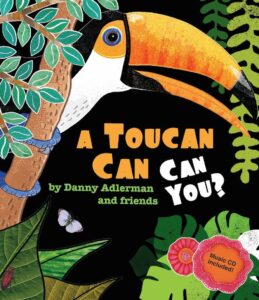 A Toucan Can, Can You?
A Toucan Can, Can You?
By Danny Adlerman
Illustrated by Lindsay Barrett George, Megan Halsey, Ashley Wolff, Demi, Ralph Masiello, Wendy Anderson Halperin, Kevin Kammeraad, Pat Cummings, Dar (Hosta), Leeza Hernandez, Christee Curran-Bauer, Kim Adlerman, and Symone Banks
Music by Jim Babjak
The Kids at Our House Children’s Books
$19.95
ISBN: 9781942390008
Ages 3-6
On shelves now
Under normal circumstances I don’t review sequels. I just don’t, really. Sequels, generally speaking, require at least a rudimentary knowledge of the preceding book. If I have to spend half a review catching a reader up on the book that came before the book that I’m actually reviewing, that’s just a waste of everyone’s time. Better to skip sequels entirely, and I include chapter book sequels, YA sequels, middle grade sequels, nonfiction sequels, graphic novel sequels, and easy book sequels in that generalization. I would even include picture book sequels, but here I pause for a moment. Because once in a while a picture book sequel will outshine the original. Such is the case with Danny Adlerman’s audibly catchy and visually eclectic A Toucan Can, Can You? A storyteller’s (and song-and-dance parent’s) dream, the book is is a sequel to the book How Much Wood Could a Woodchuck Chuck but comes into its own as a writing assignment for some, a storytime to others, and a darn good book for everybody else.
Many of us are at least passingly familiar with that old poem, “How much wood could a woodchuck chuck if a woodchuck could chuck wood?” But why stop with the woodchuck? What other compound words can you break up in amusing ways? And so we are sucked into a delightful world of teaspoons spooning tea, spaceships shipping space, and ice cream screaming “ice!” Each one of these catchy little poems (which are set to music on the accompanying CD) is paired with art from an impressive illustrator. Part collaboration and part exercise in audible frivolity, Danny Adlerman’s little book packs a great big punch.
For a group collaboration to work in a picture book there needs to be a reason for it to even exist. Which is to say, why have different people do different pieces of art for the same book? To best justify bringing these artists together you need a strong hook. And brother, I can’t think of a stronger hook then a catchy little rhyme, turned into a song, and given some clever additional rhymes to go along with it. Let’s hear it for the public domain! It’s little wonder that the customary “Note to Parents and Teachers” found in books of this sort appears at the beginning of the book rather than the end. In it, mention is made of the fact that the accompanying CD has both music with the lyrics and music without the lyrics, allowing kids to make up their own rhymes. I can attest as someone who did storytimes for toddlers and preschoolers for years that music can often be a librarian’s best friend. Particularly if it has a nice little book to show off as well. So for the storytimes for younger children, go with the words. And for the older kids? I think a writing assignment is waiting in the wings.
I was quite taken with the rhymes that already exist in this book, though. In fact, my favorite (language-wise) might have to be “How much bow could a bow tie tie if a bow tie could tae bo?” if only because “tae bo” makes shockingly few cameos in picture books these days. Finding the perfect collaboration between word and text can be difficult but occasionally the book hits gold. One example would be on the rhyme “How much ham could a hamster stir if a hamster could stir ham?” Artist Leeza Hernandez comes up with a rough riding hamster in cowboy gear astride an energetic hog. Two great tastes that taste great together.
Obviously the problem with any group collaboration is that some pieces are going to be stronger than others. But I have to admit that when I looked at that line-up I was a bit floored. In an impressive mix of established artists and new up-and-comers, Adlerman pairs his illustrators alongside rhymes that best show off their talents. Demi, for example, with her meticulous details and intricate style, is perfectly suited to honeycombs, honey, and the thin veins in the wing of a honeybee, holding a comb aloft. Meanwhile Wendy Anderson Halperin tackles the line “How much paint could a paintbrush brush” by rendering a variety of famous works, from Magritte to Diego Rivera in her two-page spread. Mind you, some artists are more sophisticated than others, and the switch between styles threatens to give one a bit of whiplash in the process. Generally speaking, however, it’s lovely. And I must confess that it was only on my fourth or fifth reading that I realized that the lovely scene illustrated by newcomer Symone Banks at the end of the book is dotted with animals done by the other artists, hidden in the details.
I don’t have to do storytimes anymore. In my current job my contact with kids is fairly minimal. But I have a two-year-old and a five-year-old at home and that means all my performance skills are on call whenever those two are around. I admit it. I need help. And books like A Toucan Can: Can You? can be lifesavers to parents like myself. If we had our way there would be a book-of-the-week club out there that personally delivered song-based picture books to our door. Heck, it should be a book-of-the-DAY club. I mean, let’s be honest. Raise a glass then and toast to Danny Adlerman and his fabulous friends. Long may their snowshoes shoo, their jellyfish fish, and their rockhoppers hop hop hop.
On shelves now.
Like This? Then Try:
- The Wheels on the Bus by Paul Zelinsky
- Down by the Bay by Raffi
- The Itsy Bitsy Spider by Richard Egielski
Source: Galley sent from author for review.
Blog: Finding Wonderland: The WritingYA Weblog (Login to Add to MyJacketFlap)
JacketFlap tags: Fantasy/Sci-Fi, MG, AF, Class and Identity in YA literature, Reviews, Adventure, Diversity, Middle Grade, Add a tag
 Synopsis: With cover blurbs from the likes of Rachel Hartman, Margaret Peterson Haddix, Anne Ursu, and Ingrid Law, the MG fantasy Sparkers by Eleanor Glewwe should have caught my eye earlier. I met Eleanor at a conference this summer and I'm a... Read the rest of this post
Synopsis: With cover blurbs from the likes of Rachel Hartman, Margaret Peterson Haddix, Anne Ursu, and Ingrid Law, the MG fantasy Sparkers by Eleanor Glewwe should have caught my eye earlier. I met Eleanor at a conference this summer and I'm a... Read the rest of this post
Blog: A Fuse #8 Production (Login to Add to MyJacketFlap)
JacketFlap tags: Reviews, USBBY, Add a tag
This is so neat that I wish I could apply for it myself. I cannot, but if you’re a member of ALSC, you could (you lucky thing).
The Association for Library Service to Children (ALSC) is seeking a personal member interested in representing ALA/ALSC on the United States Board on Books for Young People (USBBY).
One representative will be selected by the ALA Executive Board to serve a two-year term from January 1, 2017 through December 31, 2018. If you are interested in representing ALA/ALSC on the USBBY Board, please complete the online application (http://bit.ly/29S9ojN) and submit a cover letter addressed to the ALA Executive Board, a resume/CV, and one letter of recommendation no later than Tuesday, September 6, 2016.
Required Qualifications
The applicant must:
* Be a current ALSC personal member
* Have demonstrated experience in evaluating, selecting and promoting children’s literature
* Attend all USBBY meetings and conferences during his/her term of appointment. Expenses to attend USBBY meetings/conferences are the responsibility of the individual or his/her institution. USBBY, ALA and ALSC do not provide financial support
* Have knowledge of key ALSC services and resources in order to serve as an effective liaison between USBBY and ALSC’s Board of Directors
* Be a competent user of new technologies, such as wikis and electronic chat platforms, in order to accomplish work in a virtual environment between meetings
* Have demonstrated leadership skills necessary to serve on an organization’s board of directors
Responsibilities of USBBY board members
- Attend and participate in the three annual board meetings (typically in February at CBC in New York City; in June at the ALA annual conference; and in October/November at the IBBY Regional Conference (in odd numbered years) or the NCTE conference (in even numbered years).
- Submit USBBY news to newsletters, journals, web sites, and electronic discussion lists of related organizations.
- Recruit new members, nurture current members, and make the Board and Nominating Committee aware of potentially active committee members or volunteers.
- Serve as the official liaison between ALSC and USBBY 5. Assist with planning USBBY board meetings at conferences 6. Assist with planning USBBY co-sponsored programs at conferences
Documentation needed
The ALA Executive Board requires that suggestions for nominations be accompanied by a resume/CV and cover letter which indicates:
* A short summary statement of the nominee’s qualifications and indication of present position
* Affirmation that the person can fulfill the meeting attendance and travel requirements
Additionally, the ALSC Board requires:
* A letter of recommendation
Timeline
* Sept. 6 2016: deadline to submit online application and resume to ALSC for consideration
* Sept. 6- 23, 2016: ALSC’s Board of Directors evaluates applications and selects one applicant to recommend to the ALA Executive Board for appointment
* Week of Sept. 26, 2016: ALSC notifies applicants as to the status of their application
* Early October: ALA Executive Board meets and considers ALSC’s recommendation
* Week of October 24, 2016: ALSC notifies nominee of ALA Executive Board’s decision
* Jan. 1, 2017: Appointee begins representation on USBBY Board
2017 USBBY Board Meetings:
* March 3, 2017: Representatives First 2017 USBBY Board meeting
* June 22, 2017: Chicago during ALA Conference
* October 19, 2017: Seattle just before the IBBY Regional Conference
To learn more about USBBY go to www.usbby.org/<http://www.usbby.org/>.
Please contact Aimee Strittmatter ([email protected]<mailto:[email protected]>) for questions about the ALSC application process.
Aimee Strittmatter, MSI, CAE
Executive Director
Association for Library Service to Children a division of the American Library Association
50 East Huron Street
Chicago, IL 60611
312-280-2163 | fax: 312-280-5271
[email protected]<mailto:[email protected]>
Blog: A Fuse #8 Production (Login to Add to MyJacketFlap)
JacketFlap tags: NerdCamp MI, Reviews, Add a tag
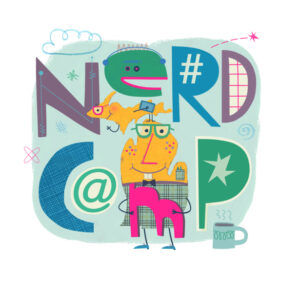 There are advantages to living in New York City. Good museums. Lots of books and readers. The sweet morning aroma of hot garbage on the street to greet you at the break of day. Consumed in such a heady aroma it can be easy to forget that there are disadvantages to the city as well. Living in the center of the universe is all well and good but one has a tendency to forget that there is a UNIVERSE outside of that center. Pull yourself away from the gravity and you discover all sorts of interesting things.
There are advantages to living in New York City. Good museums. Lots of books and readers. The sweet morning aroma of hot garbage on the street to greet you at the break of day. Consumed in such a heady aroma it can be easy to forget that there are disadvantages to the city as well. Living in the center of the universe is all well and good but one has a tendency to forget that there is a UNIVERSE outside of that center. Pull yourself away from the gravity and you discover all sorts of interesting things.
This brings us to NerdCampMI.
Unfamiliar? Here’s a quick description of the conference from its website:
“Day 1 is much like a traditional education conference. We have scheduled speakers to get you all fired up about teaching reading and writing in the classroom. For more specifics on day 1, please visit the page by clicking the link to your left.
Day 2 of nErDcamp is designed differently than your typical conference. It’s an (un)conference with a focus on literacy in learning.”
What they don’t mention is that this is very much a school-based event. Which is to say, school librarians (a few) and school teachers (the bulk) attend this event en masse. This makes a great deal of sense, of course. Prior to the creation of NerdCampMI and the corresponding Nerdy Book Club, there was a need for a large scale site dedicated to people working within the educational system.
Now like a lot of folks in NYC I’d heard about this phenomena. Phenomenon? Phenomeniacal? At any rate, it was like pulling teeth finding people who’d been. In spite of the fact that the con tends to pull in 1500 attendees, the majority appear to come from the Midwest.
Now I’m a public, rather than a school, librarian. That means that my contact with teachers is entirely reliant on this blog. Yet I’d never met a teacher who had attended, though I had met the occasional author.
It was time to rectify the situation. Oh ye folks around the country who hear about NerdCamp from time to time and think, “You mean Nerdcon? No? Camp? Wait, is that the huge thing in Parma, MI?” I am here to report and tell all.
Once, long ago, oh best beloved, I ran a conference. It was the Kidlitosphere Conference and I led it out of the main branch of New York Public Library. It was, insofar as I can recall, a success. With the exception of one Skype session, all the tech worked. It was free, like NerdCamp. There was a lot of swag, like NerdCamp. But there were significantly less people. If we’re looking at the number of children’s literature bloggers in the country vs. the number of teachers in the country, that’s par for the course, but my point is that my con was pretty small and relatively easy. It was also not an unconference, an element that I feel ups the difficulty factor tenfold. So when I walked in yesterday morning for Day One (Day Two is the unconference part and that’s actually happening right now) I didn’t quite know what to expect. I expected registration. I did not expect the epic-ly long swag line.
Nor did I expect that my favorite children’s bookstore BookBug would be the one selling titles. Hooray, Bookbug! Hooray too to the fact that they were carrying my picture book. I was not expecting that.
We all filed into a large gym where bleachers served as the seats for the massive group in attendance.
Once we were all seated we were ready for a series of small talks from a variety of different speakers. Each one spoke no longer than about 5 minutes apiece. And each one had a very specific topic they wanted to address.
Colby Sharp was the one who officially started off the day, but not with a long history of Nerdy Book Club and its accomplishments, as you might expect. Instead, he started in almost immediately with the story of Heidi, a small girl who lost all her books in a fire. After she thanked the audience members for replacing her library it was time for the first speaker.
Educator Kathy Burnett came up to the music of “My Shot” from Hamilton. Knowing her audience, she began her talk with a shout-out to Gilmore Girls. And let that be a lesson to you, oh future speakers. Mention GG at the top of any speech to librarians or teachers and the response is instantaneous.
Proving that my generation is now the one in charge of the universe, Kathy also made statements like “I read Are You There God, It’s Me Margaret, and I DID those chest exercises” (which got a lot of appreciation) followed up with knowledge that by reading V.C. Andrews you learn to avoid powdered donuts. But for the most part she spoke on a personal level about how books were a way to escape from the world when she was a child and her teachers became her surrogate parents. The speech ended with “I Rise” by Maya Angelou. It got a standing ovation.
By the way, I’m soliciting guesses on the background behind the speakers. I’m going to say that the high school was doing a production of The Wizard of Oz.
Teri Lesesne was next and she began by referencing a Richard Peck article about censorship, which was the focus of her talk. She talked at length about “censorship in all its forms” including disinvitations of authors to schools. The Phil Bildner and Kate Messner incident was mentioned (someone clapped during it and without missing a beat Teri said, “You can’t clap. This is timed.”). She then urged everyone to read Kate Milford’s continuing dialogue with the teacher responsible in some way for her disinvitation. There was an interesting moment when Teri said something along the lines of, “Gatekeeping is an insidious form of censorship”, which I am paraphrasing and which made me wish she had a lot more time to unpack that statement. I wouldn’t make “gatekeeping” a dirty word, necessarily, but I’m open to learning more about why some people think it is. In relation to this, Teri talked about books that are simply not purchased for libraries. Of course there are differences between public librarians and school ones. I guess I’d never thought much about school librarian issues of this sort. It reminded me of that recent debate between Roger Sutton and Daniel Jose Older about the librarian’s role and when you do and don’t deny a kid access to a book. Teri ended by quoting Liberian peace activist Leyman Gbowee: “You can never leave footprints if you always walk on tiptoe”, stressing finally that every kid should see that they’re not alone.
Raina Telgemeier followed and hers was a very personal talk. Raina discussed a time when she was young and was “the artist” in class. She was quiet and had a hard time making friends, so her art was a way to stand out. Then she met a boy named Shawn who could also draw. They could both do TMNT and The Simpsons. Naturally she had a huge crush on him. And so if you read her best known book Smile, he’s the boy in it (this is where I wish that Shaun were Shaun Tan, by the way). In the intervening years lots of girls have since written and asked if she married “Shawn”, or (at the very least) if he knows he was immortalized. Raina points out to them that most 36-year-old men do not seek out her art on their own. Fast forward a little. Raina was still friends with Shawn (not his real name) on Facebook. Then, last year, he got Lou Gehrig’s Disease. Raina wanted to help out in some way, but since Shawn and his family are quiet, private people she was limited in what she could do. Then she learned he was in hospice. Near the end, he just wanted people to share memories of him. So she told him at long last about the book, his role in it, and she sent him a copy with a letter of thanks. He loved it, and his nephews were thrilled that a book they already knew had their uncle in it. Shawn passed away in April of this year and Raina attended his memorial a few weeks ago. There she learned that apparently an item on Shawn’s bucket list was to become a character in a comic book. Mission accomplished. It was a nice heartfelt speech.
Now because I don’t know my average famous teachers, the name Pernille Ripp (@pernilleripp) was unknown to me. No longer. A grade teacher in WI, some speculation was made later as to whether or not she has copious experience with Poetry Slams. Such was the energy of her talk. Pernille dove right in, recounting that it was exactly 4 seconds into the new school year (last fall) before a kid in her class loudly declared how much they hated reading. You know the type. “You say reading and they cannot wait to say loudly how much they hate it . . . because this is how they identify.” These students beg you, “please don’t tell me I just haven’t met the right book yet, because that’s what ALL the teachers say.” This is, to Ms. Ripp’s mind, a pernicious problem, “because when they hate reading . . . then it just doesn’t matter what kind of strategies I am trying to teach them.” Nothing matters. “When they hate reading then that is all they can think about”. Then everything in school is attached to something they hate. “And I get it. Why would you want to do something more of something they despise.” Her advice to combat this? When you get a kid who says they don’t like to read, don’t say “no you don’t”. Try asking, “Why?” “We won’t know until we ask. A question is all we need.” Asking and talking and digging is important. “Hating reading is not their end destination.” One of her more controversial statements was that if a reading program is making even one child hate reading then that program should be ended. Interesting! Another good line regarding generations of people who don’t like to read, “Along with their genetic heritage they will also pass on their hatred of school and books.” A great talk.
Also very good? Donalyn Miller (@donalynbooks) . Shared a NerdyBookClub post that she wrote last November, The House That Reading Built which you should probably read rather than allow me to summarize. Just the same, part of what I liked about it so much was its acknowledgment of socio-economic status and disparity. “I grew up clinging to the lowest middle class rung”. In the piece Donalyn explains how both she “grew up on her library card”, as did her husband. I appreciated that she acknowledged her white privilege in spite of class burdens and took time to mentions how so many children of poverty, disproportionately of color, grow up without easy access to books. As she then pointed out, diversity in publishing isn’t just about the publishing itself. Publishing more diverse authors and illustrators only takes us so far if children do not have access to these books. Book access is the gamechanger for our children. It means that all books should accurately reflect their experiences and the experiences of children with different stories to tell and give access to “the promise” that literacy provides. The division and hatred scrolling across our screens these days can fill us with impotence and despair. Literacy, therefore, is the way to help all of us write a different story.
Then there was a special guest in town. Three guesses who it was and the first two don’t count.
Yep, peeking above that podium there is special guest Kate DiCamillo. And the crowd, naturally, goes crazy. In an interesting twist Kate told a very fun story about an incident from her youth involving a wishing bone (how William Steig!), a girl next door with purple lipstick, and a pony. It had a lot of good lines too like the fact that the girl next door was named Beverly Pagoda and, “I was forever trying to impress her and I had yet to succeed.” Also, “It was summer. I was 8-years-old. My heart was a small motor humming in my chest.” I liked that she said that the art of writing is what Raymond Chandler called “being at your station”. Of course as she was talking about what you can’t find in a writing manual, one could not help but think that should she ever want to write one, she could potentially write the children’s book version of Bird by Bird.
Then it was time for my session. Did I not mention I was speaking at this event? Oh yes! And look at my cohorts:
Travis whipped that one up. Isn’t it nice?
Mind you, I’m a bit shaky on reading schedules so this is what I saw when I looked us up. Mine is the one that says “Nibling” on it:
Oh no!, thinks I. I’m speaking about 9/11? Then I looked at the top of the page.
Oh! That makes more sense.
By the way, this was in our room on the wall. I adored it.
I recap my talk but I’m absolutely terrible about that sort of thing. Fortunately my panelists were enormously talented bloggers so I’m just going to hope that one or both of them write it up themselves and I’ll be able to link to it here.
For the next session, it was a tricky choice (as you can see from the form). In the end I decided to sit in on “Author Jeopardy”, hosted by the writer Erica Perl.
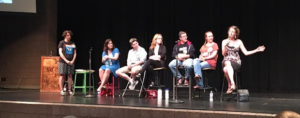 It was a nice crew of authors too. There was author Melanie Conklin who’d written Counting Thyme. There was The Entirely True Story of the Unbelievable Fib author, Adam Shaughnessy. There was the writer behind Gertie’s Leap to Greatness (Kate Beasley) who is from Georgia and is damned adorable. She had cute shoes and mentioned (on an unrelated note) that her family farm has 120 miniature cows. Extra points to Adam then for jumping in to ask, “Is that where those school milks come from?” Nice. Kelly Barnhill was there to discuss The Girl Who Drank the Moon. At one point the conversation turned to Skype visits and Kelly said she would occasionally have the kids talk to her new puppy Sirius Black or her truly disgusting guinea pig Günter. Which, right there. That’s a book. Erica S. Perl herself talked about her upcoming The Capybara Conspiracy, calling it a book, a novel, and a play all in one. Author John David Anderson of Ms. Bixby’s Last Day is actually the author I’m reading right now at this exact moment in time. And, if I might say so, his latest book has a KILLER first chapter. He described it as “The Holy Grail meets Stand By Me meets Mr. Hollin’s Opus meets . . . . cheesecake.” And finally there was YA author Aimee Carter who has written her first middle grade book in a series. The book was actually very interesting to me. It’s called Simon Thorn and the Wolf’s Den and damned if it doesn’t look a lot like those books that came out around the time Harry Potter was hot. We haven’t seen a book like this in a long time. I’ll be watching its progress with interest.
It was a nice crew of authors too. There was author Melanie Conklin who’d written Counting Thyme. There was The Entirely True Story of the Unbelievable Fib author, Adam Shaughnessy. There was the writer behind Gertie’s Leap to Greatness (Kate Beasley) who is from Georgia and is damned adorable. She had cute shoes and mentioned (on an unrelated note) that her family farm has 120 miniature cows. Extra points to Adam then for jumping in to ask, “Is that where those school milks come from?” Nice. Kelly Barnhill was there to discuss The Girl Who Drank the Moon. At one point the conversation turned to Skype visits and Kelly said she would occasionally have the kids talk to her new puppy Sirius Black or her truly disgusting guinea pig Günter. Which, right there. That’s a book. Erica S. Perl herself talked about her upcoming The Capybara Conspiracy, calling it a book, a novel, and a play all in one. Author John David Anderson of Ms. Bixby’s Last Day is actually the author I’m reading right now at this exact moment in time. And, if I might say so, his latest book has a KILLER first chapter. He described it as “The Holy Grail meets Stand By Me meets Mr. Hollin’s Opus meets . . . . cheesecake.” And finally there was YA author Aimee Carter who has written her first middle grade book in a series. The book was actually very interesting to me. It’s called Simon Thorn and the Wolf’s Den and damned if it doesn’t look a lot like those books that came out around the time Harry Potter was hot. We haven’t seen a book like this in a long time. I’ll be watching its progress with interest.
The audience was pretty big and when they asked questions they asked good practical ones, how the authors connect with kids when they Skype into a classroom.
This left the final session of the day and it was a tricky choice. Do you want to see Raina Telgemeier draw from audience suggestions or Kate DiCamillo in conversation with Mr. Schu? For me, I wanted to see the aforementionedTeri and Donalyn in action. Their topic:
Taking CARE of readers: Choice (and community), Access, Response, Engagement
And what happens? I walk in and hear them asking the audience a question: Who was the first Latino to win a Newbery? Due to the fact that like a Pavlovian dog I cannot not listen to a question about children’s literature trivia without needing to be the one to answer it RIGHT NOW, I put my hand up like a fool and declared “Paula Fox” loud and proud. Which won me a bag of goodies by accident. Oops. I just wanted to answer it SOOO MUCH!!
The gist of this final talk was about the nitty gritty aspects of getting kids to identify as readers. Folks talk so much about getting the skill set down but they don’t spend much time discussing how to get kids to the self-identify as reading kids.
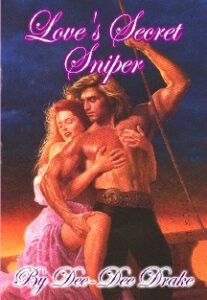 First off, the two presenters gave us their “reading audiobiography” over the years, in brief. And somehow or other, Teri managed to find a real Fabio cover called Love’s Secret Sniper for the talk. Extra points for that.
First off, the two presenters gave us their “reading audiobiography” over the years, in brief. And somehow or other, Teri managed to find a real Fabio cover called Love’s Secret Sniper for the talk. Extra points for that.
These days, the two women are now what you might call Free-Range Readers, reading whatever interests them. In fact, they aren’t afraid to recommend the occasional adult book. For example, at one point they gave a shout out to The Unpersuadables by Will Stork, which sounded absolutely fascinating. In this book the author examines why it is that otherwise intelligent people are so willing to discount research. Donalyn has seen firsthand that you can tell people how reading is important and yet they won’t believe it even if you have the fact at your disposal. Why is that? Turns out, people will jettison beliefs to be part of a group that is important to them. Ignorance is tribalism in these cases, where the deniers of one thing or another find supportive friends. That is FASCINATING! I always love it when a person applies an adult book to the world in which we live and work. Now I have to find this book.
Going back to the reading autobiography, creating one can be a great thing to do with students. When they hand them in to you (the teacher) and you look at them, can you identify the engaged readers and the ones who aren’t engaged “yet”? And really, do books belong to me or do I belong to books or is it some kind of symbiotic relationship?
So how do we best demonstrate our love of reading to our kids (both to your students and, I’d say to your own kids). Donalyn says that passion is key. But if you don’t like reading, they won’t either.
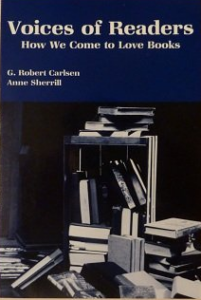 This led to another book recommendation: Voices of Readers: How We Come to Love Books by Carlsen and Sherrill. The book examines the common experiences in building readers in the early grades through high school. It’s out of print (pub date 1988)but you can actually just download the entire text. The truth is that when it lists all the factors that make a reader, they sound awfully familiar. Owning books, sharing them with friends, setting time aside for it, teachers reading aloud, discussions, and receiving help from librarians all are there.
This led to another book recommendation: Voices of Readers: How We Come to Love Books by Carlsen and Sherrill. The book examines the common experiences in building readers in the early grades through high school. It’s out of print (pub date 1988)but you can actually just download the entire text. The truth is that when it lists all the factors that make a reader, they sound awfully familiar. Owning books, sharing them with friends, setting time aside for it, teachers reading aloud, discussions, and receiving help from librarians all are there.
Then we got into the nitty gritty of it all. Stand back for . . .
Factors Affecting Reading Identity
They are . . .
- Time
- Role models at home and school
- Access to books
- Choice of reading materials
- Diversity.
I won’t delve into what all was said about these points, but Teri and Donalyn did say that their slides will be up on SlideShare and that they’ll post a link on their Twitter accounts soon.
Actually, I will latch on to one of their points, and it’s something I was thinking about a lot at this conference. As Donalyn was careful to point out, diversity is more than just a hashtag. In her talk she gave the history of #WeNeedDiverseBooks (or #WNDB) with Teri also mentioning that it includes body image and socioeconomic status (YES!). And Teri said straight out that it’s not enough to get all the Pura Belpre and CSK titles in your school or classroom library. Donalyn: “The broader our collections are the more likely we are to invite readers into the communities we are trying to build”.
Since I didn’t attend that many discussions, it’s possible that We Need Diverse Books and diversity in general was covered in other sessions too. Still, I was a bit disappointed to find that only one of the first speakers of the day (Donalyn again) mentioned it at the start of the conference.
Now let’s bring it back a bit. Let’s talk about outside perceptions of NerdCampMI. One concern that I’ve heard from others about the conference in the past is how white it is. White in terms of the speakers and the books and authors and the attendees. So let’s unpack that.
First off, it’s true that very few people of color were attending the conference as attendees. There were some, but even from my group shots you can pretty much see that it was somewhat white. I don’t know how NerdCampMI organizes or if they make tweaks each and every year. Nor do I know what goes on behind the scenes. If I were to guess, I’d say that reaching out to teachers of color is definitely slated for the old To Do list. As for the books, there were authors of color like Tracey Baptiste, Minh Le, and others, and there were speakers like Kathy Burnette. Again, efforts have been made in those areas, but there’s some room for improvement. Fortunately, as Donalyn proved, there’s clearly the inclination and the drive to be inclusive.
This is, as I say, just a recap of Day One. For the Day Two unconference you’ll need to look for someone else reporting from the scene.
Many thanks to Colby Sharp and Travis and Minh for letting me present and visit NerdCampMI for the first time. Thanks to the people I met and the sessions I attended.
Blog: Finding Wonderland: The WritingYA Weblog (Login to Add to MyJacketFlap)
JacketFlap tags: AF, Psychological Thriller, Reviews, Diversity, Suspense, Add a tag
 Synopsis: Suspense stories that deal with kidnapping and imprisonment (consider that your trigger warning) don't always put an equally weighty focus on the aftermath of the trauma. This particular thriller suspensefully covers both the dramatic... Read the rest of this post
Synopsis: Suspense stories that deal with kidnapping and imprisonment (consider that your trigger warning) don't always put an equally weighty focus on the aftermath of the trauma. This particular thriller suspensefully covers both the dramatic... Read the rest of this post
Blog: A Fuse #8 Production (Login to Add to MyJacketFlap)
JacketFlap tags: Reviews, middle grade fiction, Best Books, Dutton Children's Books, middle grade historical fiction, Adam Gidwitz, Penguin Random House, Hatem Aly, Best Books of 2016, 2016 reviews, Reviews 2016, 2016 middle grade fiction, 2016 middle grade historical fiction, Add a tag
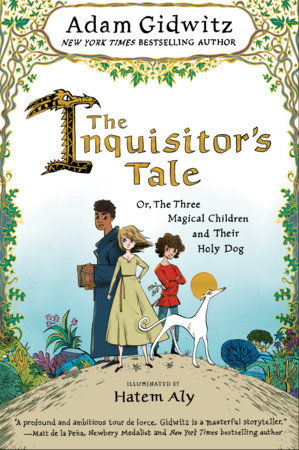 The Inquisitor’s Tale or, The Three Magical Children and Their Holy Dog
The Inquisitor’s Tale or, The Three Magical Children and Their Holy Dog
By Adam Gidwitz
Illuminated by Hatem Aly
Dutton Children’s Books (an imprint of Penguin Random House)
$17.99
ISBN: 978-0-525-42616-5
Ages 9 and up
On shelves September 27th
God’s hot this year.
To be fair, God has had some fairly strong supporters for quite some time. So if I’m going to clarify that statement a tad, God’s hot in children’s literature this year. Even then, that sentence is pretty vague. Here in America there are loads of Christian book publishers out there, systematically putting out title after title after title each and every year about God, to say nothing of publishers of other religions as well. Their production hasn’t increased hugely in 2016, so why the blanket statement? A final clarification, then: God is hot in children’s books from major non-Christian publishers this year. Ahhhh. That’s better. Indeed, in a year when serious literary consideration is being heaped upon books like John Hendrix’s Miracle Man, in walks Adam Gidwitz and his game changing The Inquisitor’s Tale. Now I have read my fair share of middle grade novels for kids, and I tell you straight out that I have never read a book like this. It’s weird, and unfamiliar, and religious, and irreligious, and more fun than it has any right to be. Quite simply, Gidwitz found himself a holy dog, added in a couple proto-saints, and voila! A book that’s part superhero story, part quixotic holy quest, and part Canterbury Tales with just a whiff of intrusive narration for spice. In short, nothing you’ve encountered in all your livelong days. Bon appétit.
The dog was dead to begin with. A greyhound with a golden muzzle that was martyred in defense of a helpless baby. As various pub goers gather in the year 1242 to catch a glimpse of the king, they start telling stories about this dog that came back from the dead, its vision-prone mistress (a peasant girl named Jeanne), a young monk blessed with inhuman strength (William, son of a lord and a North African woman), and a young Jewish boy with healing capabilities (Jacob). These three very different kids have joined together in the midst of a country in upheaval. Some see them as saints, some as the devil incarnate, and before this tale is told, the King of France himself will seek their very heads. An extensive Author’s Note and Annotated Bibliography appear at the end.
If you are familiar with Mr. Gidwitz’s previous foray into middle grade literature (the Grimm series) then you know he has a penchant for giving the child reader what it wants. Which is to say, blood. Lots of it. In his previous books he took his cue from the Grimm brothers and their blood-soaked tales. Here his focus is squarely on the Middle Ages (he would thank you not to call them “The Dark Ages”), a time period that did not lack for gore. The carnage doesn’t really begin in earnest until William starts (literally) busting heads, and even then the book feels far less sanguine than Gidwitz’s other efforts. I mean, sure, dogs die and folks are burned alive, but that’s pretty tame by Adam’s previous standards. Of course, what he lacks in disembowelments he makes up for with old stand-bys like vomit and farts. Few can match the man’s acuity for disgusting descriptions. He is a master of the explicit and kids just eat that up. Not literally of course. That would be gross. As a side note, he has probably included the word “ass” more times in this book than all the works of J.M. Barrie and Roald Dahl combined. I suspect that if this book is ever challenged in schools or libraries it won’t be for the copious entrails or discussions about God, but rather because at one point the word “ass” (as it refers to a donkey) appears three times in quick, unapologetic succession. And yes, it’s hilarious when it does.
So let’s talk religious persecution, religious fundamentalism, and religious tolerance. As I write this review in 2016 and politicians bandy hate speech about without so much as a blink, I can’t think of a book written for kids more timely than this. Last year I asked a question of my readers: Can a historical children’s book contain protagonists with prejudices consistent with their time period? Mr. Gidwitz seeks to answer that question himself. His three heroes are not shining examples of religious tolerance born of no outside influence. When they escape together they find that they are VERY uncomfortable in one another’s presence. Mind you, I found William far more tolerant of Jacob than I expected (though he does admittedly condemn Judaism once in the text). His dislike of women is an interesting example of someone rejecting some but not all of the childhood lessons he learned as a monk. Yet all three kids fear one another as unknown elements and it takes time and a mutually agreed upon goal to get them from companionship to real friendship.
As I mentioned at the start of this review, religion doesn’t usually get much notice in middle grade books for kids from major publishers these days. And you certainly won’t find discussions about the differences between Christianity and Judaism, as when the knight Marmeluc tries to determine precisely what it is to be Jewish. What I appreciated about this book was how Gidwitz distinguished between the kind of Christianity practiced by the peasants versus the kind practiced by the educated and rich. The peasants have no problem worshipping dogs as saints and even the local priest has a wife that everyone knows he technically isn’t supposed to have. The educated and rich then move to stamp out these localized beliefs which, let’s face it, harken back to the people’s ancestors’ paganism.
Race also comes up a bit, with William’s heritage playing a part now and then, but the real focus is reserved for the history of Christian/Jewish interactions. Indeed, in his wildly extensive Author’s Note at the end, Gidwitz makes note of the fact that race relations in Medieval Europe were very different then than today. Since it preceded the transatlantic slave trade, skin color was rare and contemporary racism remains, “the modern world’s special invention.” There will probably still be objections to the black character having the strength superpower rather than the visions or healing, but he’s also the best educated and intelligent of the three. I don’t think you can ignore that fact.
As for the writing itself, that’s what you’re paying your money for at the end of the day. Gidwitz is on fire here, making medieval history feel fresh and current. For example, when the Jongleur says that some knights are, “rich boys who’ve been to the wars . . . Not proper at all. But still rich,” that’s a character note slid slyly into the storytelling. Other lines pop out at you too. Here are some of my other favorites:
• About that Jongleur, “… he looks like the kind of child who has seen too much of life, who’s seen more than most adults. His eyes are both sharp and dead at the same time. As if he won’t miss anything, because he’s seen it all already.”
• “Jeanne’s mother’s gaze lingered on her daughter another moment, like an innkeeper waiting for the last drop of ale from the barrel tap.”
• “The lord and lady welcomed the knights warmly. Well, the lady did. Lord Bertulf just sat in his chair behind the table, like a stick of butter slowly melting.”
• “Inside her, grand castles of comprehension, models of the world as she had understood it, shivered.”
• And Gidwitz may also be the only author for children who can write a sentence that begins, “But these marginalia contradicted the text…” and get away with it.
Mind you, Gidwitz paints himself into a pretty little corner fairly early on. To rest this story almost entirely on the telling of tales in a pub, you need someone who doesn’t just know the facts of one moment or the next but who could claim to know our heroes’ interior life. So each teller comes to mention each child’s thoughts and feelings in the course of their tale. The nun in the book bears the brunt of this sin, and rather than just let that go Gidwitz continually has characters saying things like, “I want to know if I’m sitting at a table filled with wizards and mind readers.” I’m not sure if I like the degree to which Gidwitz keeps bringing this objection up, or if it detracts from the reading. What I do know is that he sort of cheats with the nun. She’s the book’s deux ex machina (or, possibly the diaboli ex machina) acting partly as an impossibility and partly as an ode to the author’s love of silver haired librarians and teachers out there with “sparkling eyes, and a knowing smile.”
Since a large portion of the story is taken up with saving books as objects, it fits that this book itself should be outfitted with all the beauties of its kind. If we drill down to the very mechanics of the book, we find ourselves admiring the subtleties of fonts. Every time a tale switches between the present day and the story being told, the font changes as well. But to do it justice, the story has been illuminated (after a fashion) by artist Hatem Aly. I have not had the opportunity to see the bulk of his work on this story. I do feel that the cover illustration of William is insufficiently gargantuan, but that’s the kind of thing they can correct in the paperback edition anyway.
Fairy tales and tales of saints. The two have far more in common than either would like to admit. Seen in that light, Gidwitz’s transition from pure unadulterated Grimm to, say, Lives of the Improbable Saints and Legends of the Improbable Saints is relatively logical. Yet here we have a man who has found a way to tie-in stories about religious figures to the anti-Semitism that is still with us to this day. At the end of his Author’s Note, Gidwitz mentions that as he finished this book, more than one hundred and forty people were killed in Paris by terrorists. He writes of Medieval Europe, “It was a time when people were redefining how they lived with the ‘other,’ with people who were different from them.” The echoes reverberate today. Says Gidwitz, “I can think of nothing sane to say about this except this book.” Sermonizers, take note.
On shelves September 27th.
Like This? Then Try:
- Good Masters! Sweet Ladies! Voices from a Medieval Village by Laura Amy Schlitz, ill. Robert Byrd
- The Book of Everything by Guus Kuijer
- Crispin, the Cross of Lead by Avi
Blog: PW -The Beat (Login to Add to MyJacketFlap)
JacketFlap tags: Small Presses, Books, Reviews, Graphic Novels, Comics, Webcomics, Kickstarter, Indie Comics, Crowdfunding, sophie campbell, Add a tag
It’s a rare occasion that you can use words like sweet, thoughtful, and gentle to describe a science fiction superhero story taking place in a brutal, dystopian urban battleground, but thanks to Sophie Campbell’s Shadoweyes from Iron Circus Comics, that day has arrived. Set in a cluttered and decaying city of the future, Dranac, Campbell introduces […]
Add a CommentBlog: PW -The Beat (Login to Add to MyJacketFlap)
JacketFlap tags: review, Reviews, Superman, Batman, rebirth, DC Comics, Aquaman, Justice League, Green Lanterns, Gree Arrow, Add a tag
 Alex Lu and Kyle Pinion round up this week's Rebirth reviews and rank the first month of releases!
Alex Lu and Kyle Pinion round up this week's Rebirth reviews and rank the first month of releases!
Blog: PW -The Beat (Login to Add to MyJacketFlap)
JacketFlap tags: Reviews, rebirth, DC Comics, Top News, Sam Humphries, Green Lanterns, Robson Rocha, Add a tag
Blog: PW -The Beat (Login to Add to MyJacketFlap)
JacketFlap tags: Reviews, rebirth, DC Comics, Green Arrow, Top News, Ben Percy, Otto Schmidt, Add a tag
Blog: PW -The Beat (Login to Add to MyJacketFlap)
JacketFlap tags: Reviews, rebirth, Dan Abnett, DC Comics, Aquaman, Top News, Scot Eaton, Add a tag
 The King of the Seas needs some narrative momentum or risks becoming another forgettable take
The King of the Seas needs some narrative momentum or risks becoming another forgettable take
Blog: PW -The Beat (Login to Add to MyJacketFlap)
JacketFlap tags: Reviews, Superman, rebirth, DC Comics, Peter Tomasi, Patrick Gleason, Top News, Add a tag
Blog: PW -The Beat (Login to Add to MyJacketFlap)
JacketFlap tags: Reviews, Batman, rebirth, DC Comics, Top News, Jordie Bellaire, Tom King, David Finch, Danny Miki, Matt Banning, Add a tag
 King and Finch's second outing keeps up the momentum of the first with some key reveals
King and Finch's second outing keeps up the momentum of the first with some key reveals
Blog: PW -The Beat (Login to Add to MyJacketFlap)
JacketFlap tags: dover graphic novels, Teri S. Woods, Wandering Star, Reviews, Graphic Novels, Graphic Novel Reviews, Top News, Add a tag
 Dover Publications is mostly known for two things: papercraft books (including coloring books back before they were cool), and reprinting lost literary treasures, mostly in the public domain. That reprint model changed a few years ago, when Drew Ford, then an editor at Dover, started a graphic novel line, reprinting many forgotten classics from the […]
Dover Publications is mostly known for two things: papercraft books (including coloring books back before they were cool), and reprinting lost literary treasures, mostly in the public domain. That reprint model changed a few years ago, when Drew Ford, then an editor at Dover, started a graphic novel line, reprinting many forgotten classics from the […]
Blog: A Fuse #8 Production (Login to Add to MyJacketFlap)
JacketFlap tags: picture book poetry, African-American authors and illustrators, Best Books of 2016, 2016 reviews, Reviews 2016, 2016 poetry, Reviews, history, poetry, Simon and Schuster, Atheneum, Best Books, Ashley Bryan, multicultural children's literature, African-American history, Add a tag
 Freedom Over Me: Eleven slaves, their lives and dreams brought to life
Freedom Over Me: Eleven slaves, their lives and dreams brought to life
By Ashley Bryan
Atheneum (an imprint of Simon & Schuster)
$17.99
ISBN: 978-1481456906
Ages 9 and up
On shelves September 13th
Who gives voice to the voiceless? What are your credentials when you do so? When I was a teen I used to go into antique stores and buy old family photographs from the turn of the century. It still seems odd to me that this is allowed. I’d find the people who looked the most interesting, like they had a story to tell, and I’d take them home with me. Then I’d write something about their story, though mostly I just liked to look at them. There is a strange comfort in looking at the faces of the fashionable dead. A little twinge of momento mori mixed with the knowledge that you yourself are young (possibly) and alive (probably). It’s easy to hypothesize about a life when you can see that person’s face and watch them in their middle class Sunday best. It is far more difficult when you have no face, a hint of a name, and/or maybe just an age. Add to this the idea that the people in question lived through a man made hell-on-earth. When author/illustrator/artist Ashley Bryan acquired a collection of slave-related documents from the 1820s to the 1860s he had in his hands a wealth of untold stories. And when he chose to give these people, swallowed by history, lives and dignity and peace, he did so as only he could. With the light and laughter and beauty that only he could find in the depths of uncommon pain. Freedom Over Me is a work of bravery and sense. A way of dealing with the unimaginable, allowing kids an understanding that there is a brain, heart, and soul behind every body, alive or dead, in human history.
The date on the Fairchilds Appraisement is July 5, 1828. On it you will find a list of goods to be sold. Cows, hogs, cotton . . . and people. Eleven people, if we’re going to be precise (and we are). Most have names. One does not. Just names on a piece of paper almost 200-years-old. So Ashley Bryan, he takes those names and those people, and for the first time in centuries we get to meet them. Here is Athelia, a laundress who once carried the name Adero. On one page we hear about her life. On the next, her dreams. She remembers the village she grew up in, the stories, and the songs. And she is not alone in this. As we meet each person and learn what they do, we get a glimpse into their dreams. We hear their hopes. We wonder about their lives. We see them draw strength from one another. And in the end? The sale page sits there. The final words: “Administered to the best of our Judgment.”
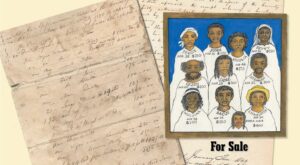 I have often said, and I say it to this day, that if there were ever a Church of Ashley Bryan, every last person who has ever met him or heard him speak would be a member. There are only a few people on this great green Earth that radiant actual uncut goodness right through their very pores. Mr. Bryan is one of those few, so when I asked at the beginning of this review what the credentials are for giving voice to the voiceless, check off that box. There are other reasons to trust him, though. A project of this sort requires a certain level of respect for the deceased. To attain that, and this may seem obvious, the author has to care. Read enough books written for kids and you get a very clear sense of those books written by folks who do not care vs. folks that do. Even then, caring’s not really enough. The writing needs to be up to speed and the art needs to be on board. And for this particular project, Ashley Bryan had a stiffer task at hand. Okay. You’ve given them full names and backgrounds and histories. What else do they need? Bryan gives these people something intangible. He gives them dreams. It’s right there in the subtitle, actually: “Eleven slaves, their lives and dreams brought to life.”
I have often said, and I say it to this day, that if there were ever a Church of Ashley Bryan, every last person who has ever met him or heard him speak would be a member. There are only a few people on this great green Earth that radiant actual uncut goodness right through their very pores. Mr. Bryan is one of those few, so when I asked at the beginning of this review what the credentials are for giving voice to the voiceless, check off that box. There are other reasons to trust him, though. A project of this sort requires a certain level of respect for the deceased. To attain that, and this may seem obvious, the author has to care. Read enough books written for kids and you get a very clear sense of those books written by folks who do not care vs. folks that do. Even then, caring’s not really enough. The writing needs to be up to speed and the art needs to be on board. And for this particular project, Ashley Bryan had a stiffer task at hand. Okay. You’ve given them full names and backgrounds and histories. What else do they need? Bryan gives these people something intangible. He gives them dreams. It’s right there in the subtitle, actually: “Eleven slaves, their lives and dreams brought to life.”
And so the book is a work of fiction. There is no amount of research that could discover Bacus or Peggy or Dora’s true tales. So when we say that Bryan is giving these people their lives back, we acknowledge that the lives he’s giving them aren’t the exact lives they led. And so we know that each person is a representative above and beyond the names on that page. Hence the occupations. Betty is every gardener. Stephen every architect. Dora every child that was born to a state of slavery and labored under it, perhaps their whole lives. And there is very little backmatter included in this book. Bryan shows the primary documents alongside a transcription of the sales. There is also an Author’s Note. Beyond that, you bring to the book what you already know about slavery, making this a title for a slightly older child readership. Bryan isn’t going to spend these pages telling you every daily injustice of slavery. Kids walk in with that knowledge already in place. What they need now is some humanity.
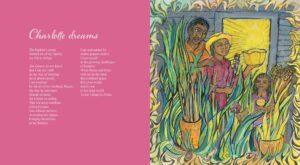 Has Mr. Bryan ever done anything with slavery before? I was curious. I’ve watched Mr. Bryan’s books over the years and they are always interesting. He’s done spirituals as cut paper masterpieces. He’s originated folktales as lively and quick as their inspirational forbears. He makes puppets out of found objects that carry with them a feeling not just of dignity, but pride. But has he ever directly done a book that references slavery? So I examined his entire repertoire, from the moment he illustrated Black Boy by Richard Wright to Susan Cooper’s Jethro and the Jumbie to Ashley Bryan’s African Folktales, Uh-Huh and beyond. His interest in Africa and song and poetry knows no bounds, but never has he engaged so directly with slavery itself.
Has Mr. Bryan ever done anything with slavery before? I was curious. I’ve watched Mr. Bryan’s books over the years and they are always interesting. He’s done spirituals as cut paper masterpieces. He’s originated folktales as lively and quick as their inspirational forbears. He makes puppets out of found objects that carry with them a feeling not just of dignity, but pride. But has he ever directly done a book that references slavery? So I examined his entire repertoire, from the moment he illustrated Black Boy by Richard Wright to Susan Cooper’s Jethro and the Jumbie to Ashley Bryan’s African Folktales, Uh-Huh and beyond. His interest in Africa and song and poetry knows no bounds, but never has he engaged so directly with slavery itself.
Could this have been done as anything but poetry? Or would you even call each written section poetry? I would, but I’ll be interested to see where libraries decide to shelve the book. Do you classify it as poetry or in the history section under slavery? Maybe, for all that it seems to be the size and shape of a picture book, you’d put it in your fiction collection. Wherever you put it, I am reminded, as I read this book, of Good Masters! Sweet Ladies! where every lord and peasant gets a monologue from their point of view. Freedom Over Me bears more than a passing similarity to Good Masters. In both cases we have short monologues any kid could read aloud in class or on their own. They are informed by research, and their scant number of words speak to a time we’ll never really know or understand fully. And how easy it would be to turn this book into a stage play. I can see it so easily. Imagine if you turned the Author’s Note into the first monologue and Ashley Bryan his own character (behold the 10-year-old dressed up as him, mustache and all). Since the title of the book comes from the spiritual “Oh, Freedom!” you could either have the kids sing it or play it in the background. And for the ending? A kid playing the lawyer or possibly Mrs. Fairchilds or even Ashley comes out and reads the statement at the end with each person and their price and the kids step forward holding some object that defines them (clothing sewn, books read, paintings, etc.). It’s almost too easy.
 The style of the art was also interesting to me. Pen, ink, and watercolors are all Mr. Bryan (who is ninety-two years of age, as of this review) needs to render his people alive. I’ve see him indulge in a range of artistic mediums over the years. In this book, he begins with an image of the estate, an image of the slaves on that estate, and then portraits and renderings of each person, at rest or active in some way. “Peggy” is one of the first women featured, and for her portrait Ashley gives her face whorls and lines, not dissimilar to those you’d find in wood. This technique is repeated, to varying degrees, with the rest of the people in the book. First the portrait. Then an image of what they do in their daily lives or dreams. The degree of detail in each of these portraits changes a bit. Peggy, for example, is one of the most striking. The colors of her skin, and the care and attention with which each line in her face is painted, make it clear why she was selected to be first. I would have loved the other portraits to contain this level of detail, but the artist is not as consistent in this regard. Charlotte and Dora, for example, are practically line-less, a conscious choice, but a kind of pity since Peggy’s portrait sets you up to think that they’ll all look as richly detailed and textured as she.
The style of the art was also interesting to me. Pen, ink, and watercolors are all Mr. Bryan (who is ninety-two years of age, as of this review) needs to render his people alive. I’ve see him indulge in a range of artistic mediums over the years. In this book, he begins with an image of the estate, an image of the slaves on that estate, and then portraits and renderings of each person, at rest or active in some way. “Peggy” is one of the first women featured, and for her portrait Ashley gives her face whorls and lines, not dissimilar to those you’d find in wood. This technique is repeated, to varying degrees, with the rest of the people in the book. First the portrait. Then an image of what they do in their daily lives or dreams. The degree of detail in each of these portraits changes a bit. Peggy, for example, is one of the most striking. The colors of her skin, and the care and attention with which each line in her face is painted, make it clear why she was selected to be first. I would have loved the other portraits to contain this level of detail, but the artist is not as consistent in this regard. Charlotte and Dora, for example, are practically line-less, a conscious choice, but a kind of pity since Peggy’s portrait sets you up to think that they’ll all look as richly detailed and textured as she.
Those old photographs I once collected may well be the only record those people left of themselves on this earth, aside from a name in a family tree and perhaps on a headstone somewhere. So much time has passed since July 5, 1828 that it is impossible to say whether or not the names on Ashley’s acquired Appraisement are remembered by their descendants. Do families still talk about Jane or Qush? Is this piece of paper the only part of them that remains in the world? It may not have been the lives they led, but Ashley Bryan does everything within his own personal capacity to keep these names and these people alive, if just for a little longer. Along the way he makes it clear to kids that slaves weren’t simply an unfortunate mass of bodies. They were architects and artists and musicians. They were good and bad and human just like the rest of us. Terry Pratchett once wrote that sin is when people treat other people as objects. Ashley treats people as people. And times being what they are, here in the 21st century I’d say that’s a pretty valuable lesson to be teaching our kids today.
On shelves September 13th.
Source: Galley sent from publisher for review.
Like This? Then Try:
- My Seneca Village by Marilyn Nelson
- I Lay My Stitches Down: Poems of American Slavery by Cynthia Grady, ill. Michele Wood
- Good Masters! Sweet Ladies! Poems from a Medieval Village by Laura Amy Schlitz, ill. Robert Byrd
Professional Reviews: A star from Kirkus
Misc: Interested in the other books Mr. Bryan has written or illustrated over the course of his illustrious career? See the full list on his website here.
Blog: PW -The Beat (Login to Add to MyJacketFlap)
JacketFlap tags: Small Presses, Reviews, Comics, Mini Comics, Indie Comics, Anne Emond, madeline flores, Laura Knetzger, Retrofit Comics, Sophie Franz, Yumi Sakugawa, Alabaster Pizzo, Kaeleigh Forsyth, Akino Kondah, Add a tag
Bear, Bird, and Stag Were Arguing In The Forest and Other Stories by Madeline Flores Flores offers three philosophical shorter works that come together well in their examination of knowing yourself, living purposefully, understanding where you stand in the universe, seeing the potential in yourself, and lots of other good things, but without being heavy. Instead […]
View Next 25 Posts









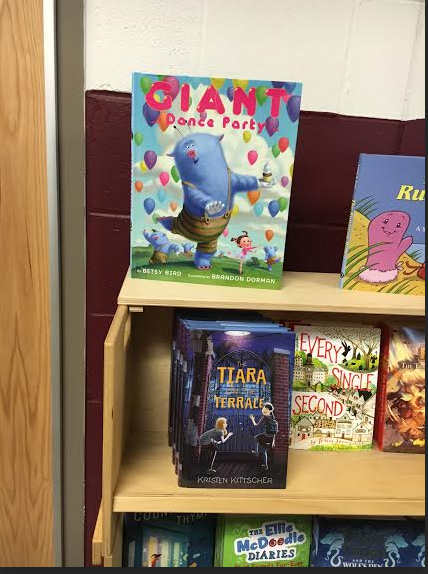

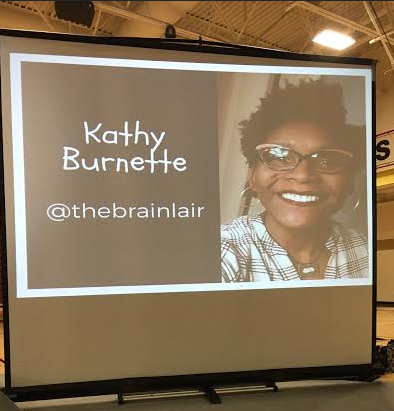

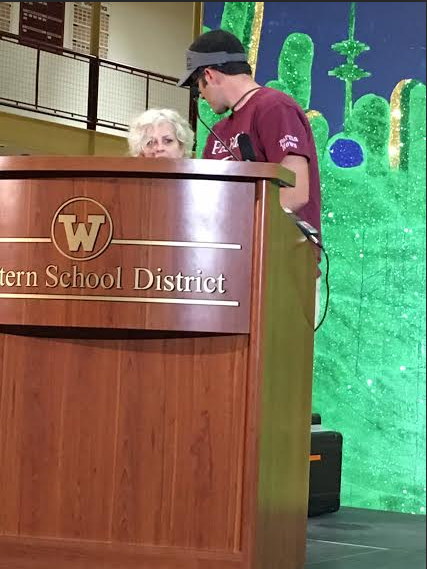

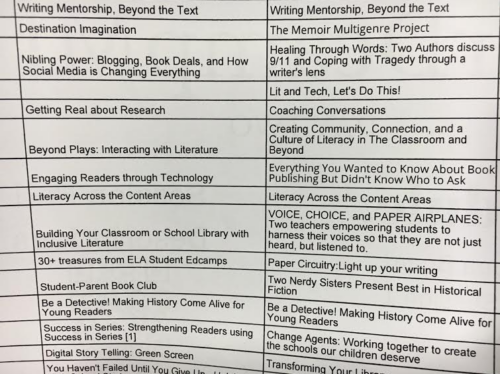
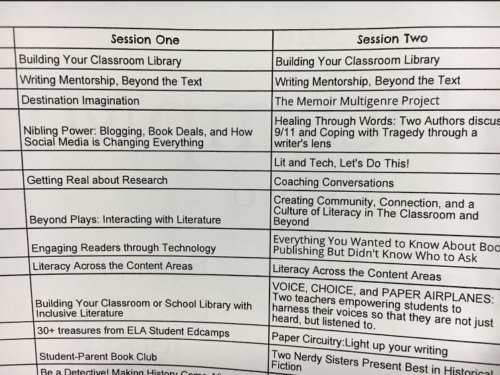

 Green Lanterns struggles to make us care about its rookie lanterns and high-stakes
Green Lanterns struggles to make us care about its rookie lanterns and high-stakes
 Green Arrow continues to be one of the most surprising pleasures of the Rebirth line
Green Arrow continues to be one of the most surprising pleasures of the Rebirth line
 Tomasi and Gleason continue to excel with the family dynamics of Superman
Tomasi and Gleason continue to excel with the family dynamics of Superman
Hey, Betsy–you know the scene at the end of 50 Years of American Doctor Who in which Gene Wilder is jumping around? 10 points if you could tell me the name of the movie that scene is from.
I was asking that of a friend a while ago. Alas, I’ve forgotten the answer. I wish I knew!
It was The Adventure of Sherlock Homes’ Smarter Brother, written and directed by Gene Wilder. Came out in 1975. Gene played Sigerson Holmes, Sherlock’s younger brother, who was terribly jealous of Sherlock (“Do you know what his first really is? ‘Sheer Luck!'”) Pretty good movie.
Off to rent . . .
I liked that movie so much as a tween. “May I present Miss LIAR!”
It is a testament to Gene’s skills that I can hear his voice reading that perfectly, though I’ve never seen the film.
Hi,
Speaking of happy childhood memories, I was able to track down what is for sure the book I was looking for when I read you article at http://blogs.slj.com/afuse8production/2009/11/26/thanksgiving-the-ernestine-mystery/#comment-4765. I don’t know if it is really the one you were looking for, but I thought I’d let you know. It is called Good Old Ernie by Jerry Mallett. Shout out to my second grade teacher, Judy Gomoluch, who is still good friends with my fourth grade teacher Mary Kain, and saw and answered my Facebook post.
Oh, sweet mystery of life at last I’ve found you!!!!
I can’t believe it! After all these years and that, you are absolutely 100% correct, is IT. WOW! Thank you so much for solving this. I’m off to find it for myself. Wow wow wow!